Home Blog Presentation Ideas Writing Catchy Presentation Titles: Proven Techniques You Should Know

Writing Catchy Presentation Titles: Proven Techniques You Should Know
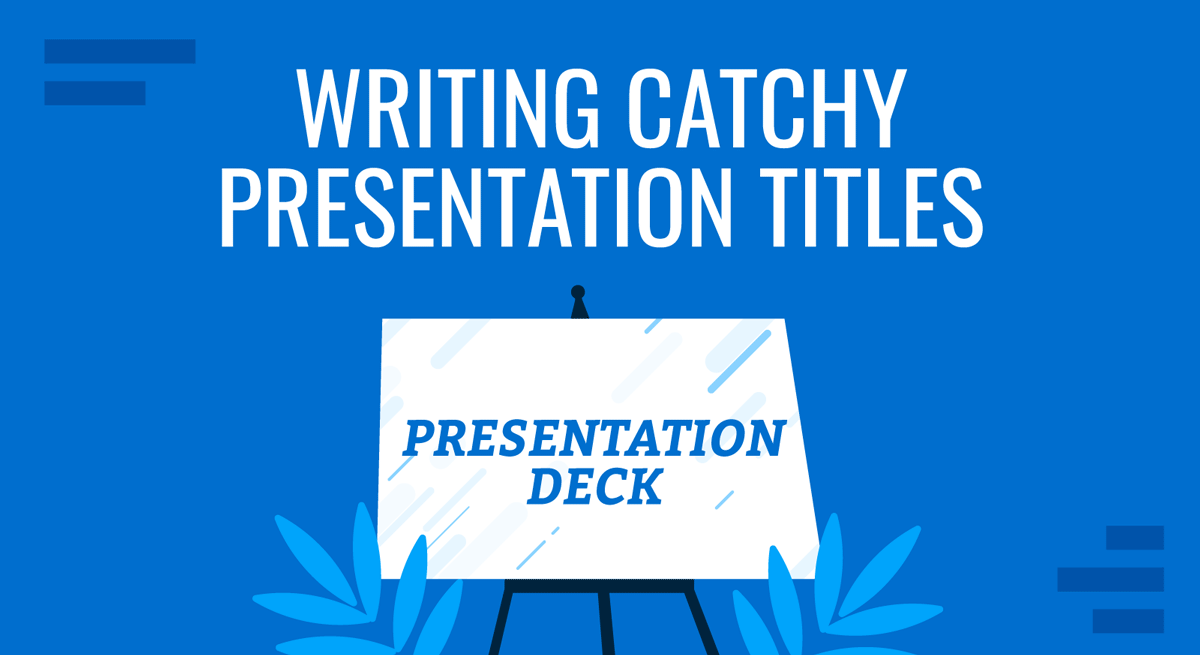
It’s easy to overlook or give less attention to presentation titles, especially if you have limited time to assemble your material. You may rather prioritize other aspects, such as gathering information, creating slides, or rehearsing the delivery. Yet, hastily choosing the headline for your presentation is a blunder you wouldn’t want to commit.
First impressions – last, and that also applies when presenting. Engaging presentations begin with engaging titles and opening slides. If your title is sloppy, your audience will think your presentation is your best. This article will discuss what makes a good presentation title and how you can create it.
Table of Contents
The Anatomy of a Good Presentation Title
Presentation titles styles, tips for creating catchy presentation title, frequently asked questions on presentation titles.
A good presentation headline or title serves two purposes: practical and creative.
The practical purpose of a presentation title is to provide a clear and concise description of the content. It helps set the expectations of your audience, allowing them to anticipate what they will learn or gain from the presentation.
On the other hand, the creative aspect is one thing that charms your audience. An intriguing or thought-provoking title can pique the audience’s curiosity and motivate them to attend the presentation through and through. It generates interest and makes them eager to learn more.
As the presenter, you should strive to find a title that strikes the right balance between informative and engaging. It must go beyond mere description, as a descriptive title may fail to stand out or engage your audience. On the flip side, an overly clever title may sacrifice clarity and fail to encapsulate the content of your presentation accurately.
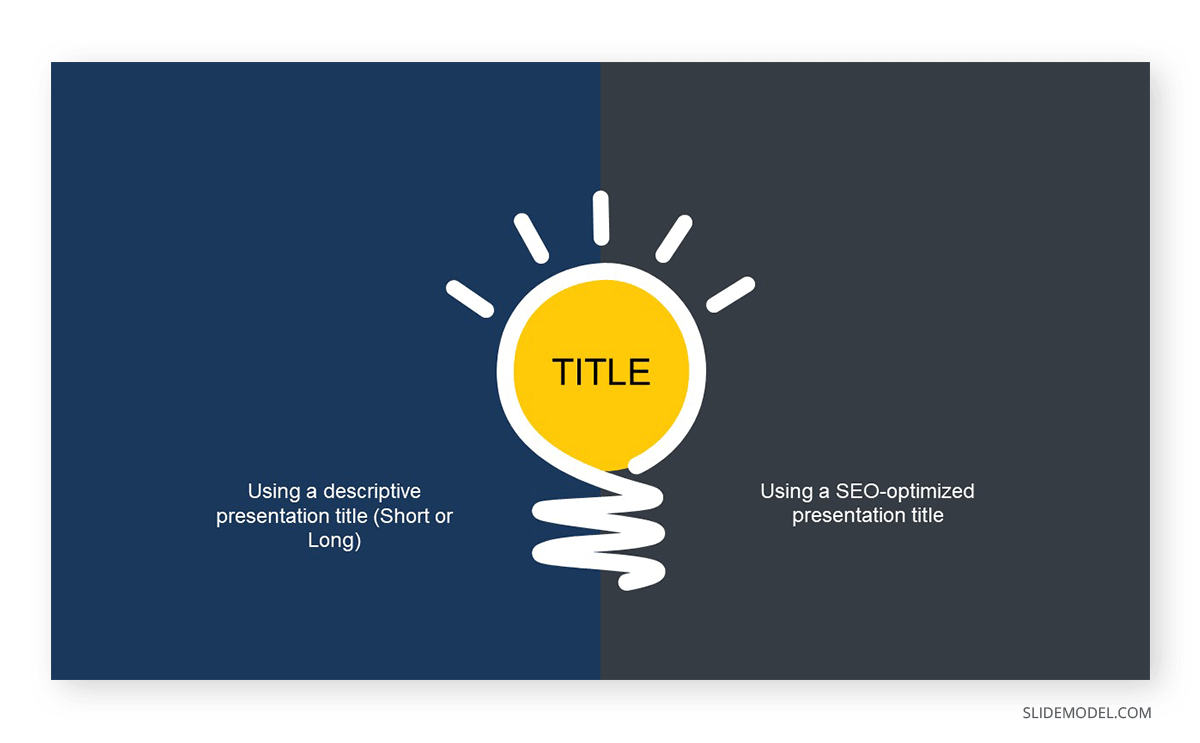
1. Surprise
Using startling statements or unexpected facts can effectively capture the audience’s attention. When something unexpected is presented, it naturally piques curiosity and leaves a lasting impression.
So, if you come across a fact, statistic, or quote about a topic that truly surprised you, work on it and make it your headline. Chances are, such information will likewise come as a surprise to your audience. Of course, you must ensure that the surprise element is relevant and contributes to the overall message you aim to deliver.
Example: Neil Patel, an online marketing expert, delivered a compelling piece titled “90% Of Startups Fail: What You Need To Know About The 10%”. The title contains an element of surprise, which suggests that most startup companies don’t survive. Within the article, Patel presented advice for startups to avert failure.
2. Intrigue
Ever wonder why you can’t seem to resist Buzzfeed headlines? That’s right; they are often intriguing and clickbaity. This technique also works on presentation titles.
Intrigue headlines capture attention and generate interest in presentations. They can create curiosity, engage the audience, and make your presentation stand out.
When crafting an intriguing headline, you may use thought-provoking questions or vague statements that spark the audience’s interest and, at the same time, clearly convey the topic of your presentation.
Example: Susan Colantuono’s Ted Talk, entitled “The career advice you probably didn’t get,” exhibits intrigue. The title immediately piques curiosity by suggesting that the presentation will provide unconventional or lesser-known career advice that the audience may not have received. This creates a sense of anticipation and motivates individuals to attend the presentation to discover what unique insights or perspectives will be shared.
3. Benefit or Value
Presentation titles that make clear claims about something’s worth may be more engaging than just stating it. When your audience knows exactly what’s in the presentation, they will likely lean in and listen.
The idea is to communicate right off the headline the main advantage the audience will gain from engaging with the content. You don’t have to include the entire proposition, but you may convey the essence of the value proposition to generate interest among the audience.
Example: Lawrence Ong’s “Break The Cycle: How To Gain Financial Freedom” clearly states the benefits of attending the presentation in the headline. It positions itself as a source of knowledge for building wealth and suggests that listening to the talk will equip the audience with the lessons they need to achieve their desired financial independence.
4. Wordplay
Using wordplay in presentation titles can be a clever way to add flair to your presentation title. Playing with words can evoke emotions like humor and curiosity, which engages the audience from the start. It stands out from more specific titles, making people pause and take notice.
There are several types of word plays that you can incorporate into your presentation title, like puns, double-meaning words, metaphors , and rhymes. The idea is to strike the right balance so that the playfulness doesn’t overshadow the clarity and relevance of the title. The wordplay should align with the topic and purpose of your presentation while adding a touch of creativity.
Example: Steve Jobs’s keynote speech 2001 introducing the original iPod with the title “1000 songs in your pocket” is an excellent example of wordplay used in a presentation headline.
The wordplay in this example contrasts the figure “1000”, a substantial quantity, and the phrase “in your pocket,” representing portable space. By combining these elements, the presentation title effectively communicated the storage capacity and convenience of the device playfully and memorably.
1. Keep It Short
A strong presentation title conveys the main topic using a few words. Short statements are more likely to impact the audience immediately, and their brevity makes them easily understood and remembered, leaving a lasting impression.
How short is short? The ideal length for headlines on PowerPoint slides is 6-14 words, and this range helps ensure that the title of your presentation carries the message you want to get across without wordiness.

2. Use Concrete Language
Using concrete language in your presentation title is an effective way to make it more compelling. Concrete language has persuasive power as it clarifies your presentation title and makes it relatable to the audience.
Some powerful words you can inject into your headlines are adjectives, action words, and actual figures. So, instead of “Optimizing Business Processes,” you can say “Cut Costs by 20%: Streamlining Operational Efficiency”.
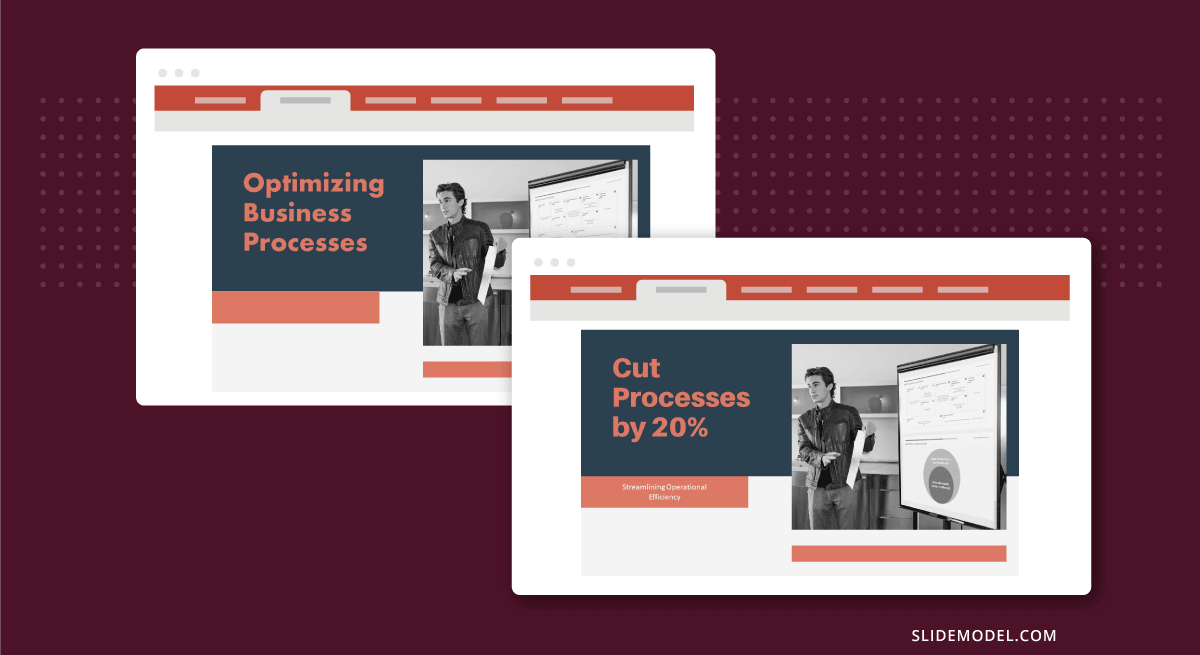
3. Use Technology or AI
Crafting a catchy presentation headline is hard enough – all the more when you have to fit it into little words. If you find yourself stuck in this task, there are available technologies that can help you generate title ideas for your presentations.
SEMRUSH, in particular, has an AI title generator that suggests headlines for content based on your prompts. You may also use ChatGPT for your presentations in a similar way.
However, we only suggest using these tools to speed up your brainstorming process, as repurposing those presentations into blog posts implies the risk of a site penalty for AI-generated content by Google. Reviewing and refining the generated headline to ensure it aligns with your specific presentation and captures the essence of your message is important.
4. Use Proven Formulas
Another way to speed up the process of generating title ideas presentation is to use proven formulas. Like your typical math equation, these formulas provide a framework to adapt to your specific presentation and audience. You can use them as a starting point to experiment with different combinations of words to create a headline that captures the gist of your piece,
Here are some presentation title formulas you can use:
- How to [Desirable Outcome] in [Specific Time Frame]
- Discover the [Number One] Secret to [Desirable Outcome]
- The [Adjective] Way to [Desirable Outcome]: [Unique Approach/Method]
- Are You [blank]?
- Unlocking the Secrets of [Topic]: [Key Insight/Strategy]”
Q1: What is the purpose of a catchy title in a presentation?
A: The purpose of a catchy title in a presentation is to grab the audience’s attention and, at the same time, communicate the main idea or focus of the talk.
Q2: How do I create a catchy title for my presentation?
A: Creating a catchy title involves balancing creativity, clarity, and relevance. Finding the right balance between description and creativity allows you to create a catchy title that generates interest without sacrificing clarity.
Q3: What are some tips for making a title stand out?
A: To make a title stand out, clearly describe the content while engaging the audience’s curiosity. Additionally, use concrete language and keep it short.
Q4: Can a title be too long for a presentation?
A: Yes. Keep presentation titles concise and to the point, as longer titles can be harder to read, remember, and fit on slides effectively.
Q5: How does a title affect the overall success of a presentation?
A: The title serves as a hook that entices people to attend the presentation and creates a positive first impression. It may be the first and last chance to convince your audience to lend their ears.
Q6: Are there any specific formats for presentation titles?
A: No, there is no specific format for presentation titles, but there are approaches that can make it more effective. You can use descriptive words, wordplay, figures, or surprising facts.
There are infinite ways to make your presentation title catchy, and this article presented some of the proven techniques that work. In creating an attention-grabbing title, ensure your main message is not overshadowed or lost. Keep it relevant, concise, and clear!
Once your compelling headline is ready, designing your opening slide will be next.

Like this article? Please share
Presentation Skills, Presentation Tips Filed under Presentation Ideas
Related Articles
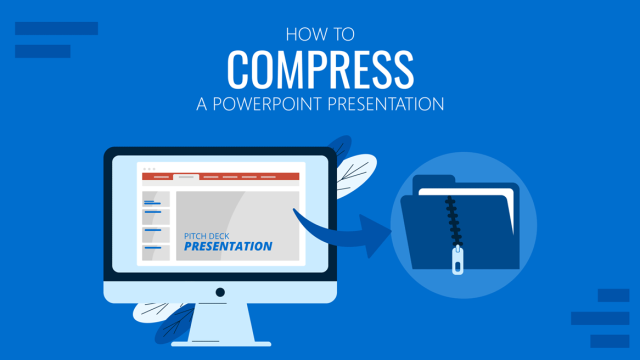
Filed under PowerPoint Tutorials • May 28th, 2024
How to Compress PowerPoint Presentations
You don’t need to end up with gigantic PowerPoint files you cannot email or distribute with ease. Instead, learn how to compress PowerPoint presentations by applying any of these 6 different methods.
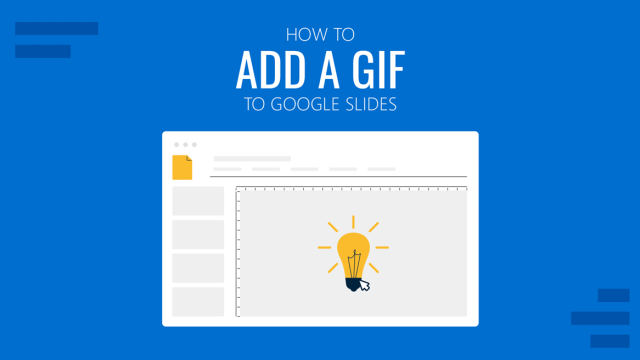
Filed under Google Slides Tutorials • May 28th, 2024
How to Add a GIF to Google Slides
With this guide we teach you how to make presentations more interesting by adding GIF images to Google Slides.

Filed under Google Slides Tutorials • May 22nd, 2024
How to Add Audio to Google Slides
Making your presentations accessible shouldn’t be a hard to accomplish task. Learn how to add audios to Google Slides and improve the quality and accessibility of your presentations.
Leave a Reply
- Speech Crafting →
9 Ways to Write a Catchy Presentation Title
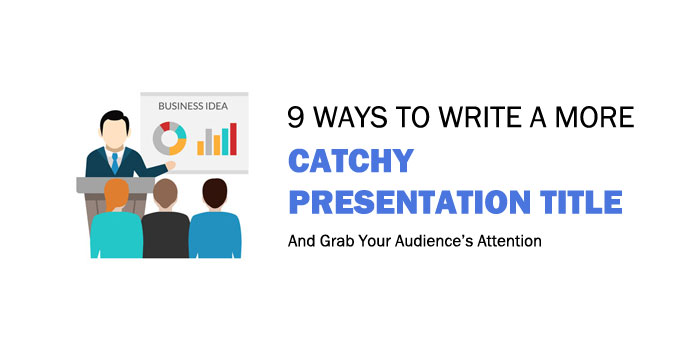
What’s the first thing the audience sees about your presentation before you begin the speech? The title!
Before starting your presentation, you must grab your audience's attention from the first moment. With a bland title, your audience will likely lose interest before you start.
One of the best ways to engage your audience from the beginning is by using a catchy title.
After all, it is the first thing your audience will see before the presentation commences. The title informs your audience about what your presentation entails; hence, it must be appealing. It must ensure that your listeners find the presentation interesting.
So, if you want your presentation title to stand out, here are some tips on how to write a catchy presentation title.
9 Tips for Writing a Catchy Presentation Title
Utilize the tricks below to create the perfect presentation title according to your audience.
1. Provide Relevant Information
People typically seek to gain answers to their questions from presentations. One way they can confirm if a presentation holds information relevant to their question is with the title.
"How-to" titles usually do the trick if you want to attract your viewers and let them know that you can solve their problems.
You usually do not need to create lengthy titles to explain your content, and a simple yet informative title would suffice. Your title should inform your listeners what they stand to gain and make them curious about what your presentation entails.
Examples of this include:
- How to engage an audience and keep their attention
- How to create a presentation worth listening to
2. Tell a Story
People love to hear stories . However, you do not need to limit your storytelling to the actual presentation. You can also include the power of a story in your title.
The story you tell does not necessarily need to be your own but should be relevant to your presentation and resonate with your audience.
This format works best if you plan on presenting a case study. Remember that this format demands that you create a story that tells viewers how someone or something got from one point to another.

For example, 'How A got to B." Ensure to use adjectives to showcase the transformation from point A to point B truly.
Example titles include:
- How a low-income household started earning significantly
- How a charitable organization created opportunities for uneducated children
3. Make Use of Numbers
Adding numbers to your presentation title can attract even those well-versed in the topic you plan on discussing.
For instance, "three tips on how to teach kindergartners" sounds better than "how to teach kindergarteners."
Even the best kindergarten teachers would be intrigued and want to find out what these three tips are.
The number you decide to use depends on your presentation. However, it is best to keep the number at a minimum. Typically, it would be best to aim for three, but you can go as high as five.
Using fewer points allows you to go into detail on each point explicitly. This way, you can fully explain each concept to allow your viewers to grasp each.
It also shows them that you know what you are talking about. Remember, it is best to present your topic more deeply than to discuss numerous concepts widely.
4. Keep Your Audience Wanting More
Another way to grab your viewers' attention is to pique their interest. Provoke their curiosity, and you can keep them hooked until the end of your presentation.
This format works best when you want to reveal a new research study. After all, people attend seminars, workshops, and conferences to learn about the latest discoveries in their fields. An example of this is:
- New research shows that the most optimal method to teach kindergarteners
This title suggests there is a new trick that kindergarten teachers can use in their classrooms to improve the teaching and learning experience. If you were a kindergarten teacher, wouldn't you be intrigued to find out what this presentation is all about?
Alternatively, you can use this format even if you do not have recent research results to reveal. All you need to do is evoke curiosity. Here is an example:
- The best strategy to teach a classroom full of kindergarteners
This title does not discuss any research information, but it would still make the viewer wonder what the "best strategy is.
5. Use Questions in the Title
You can use questions in your headline to attract listeners.
However, ensure that the questions are related to something they care about. Otherwise, you risk losing your audience's interest. The trick is to relate your question to the benefit of listening to your presentation. Examples of this include:
- Do you want to know the five things you are doing wrong as a blogger?
- Are you ready to start exercising? Start the right way

The question in your header does not always need to be a question. You can simply hint or imply it. An example of this is:
- That's right! Skincare products produce better results than you expect
6. Command Your Audience
Sometimes, the best way to grab and keep your viewer's attention is to be direct. As a professional, you should tell them the action to make or to act a certain way. Tell your viewers what these actions can lead to.
This format's point is to ask your audience "why," so this curiosity would make them want to hear what you have to say. Some examples titles include:
- Stop wasting time on things that do not matter
- Throw that negativity away and embrace positive change
7. Imply Privileged Information
We all love secrets and want to feel like we are in on something private. This is why creating titles that imply that you are providing information that only a few people know can draw attention to your presentation. Examples include:
- Secrets of teaching kindergartners
- Teaching techniques that only pros know
8. Offer Easy Solutions
You can attract people when you tell them they can easily learn to do something or do it in a short amount of time.
In your title, ensure not to mention the process because it would seem like a lot of work. Instead, focus on the viewer's motivation. Talk about the result of listening to your presentation. For example, you can use:
- Learn to stop procrastinating right now
- Best way to cook chicken in less than 30 minutes
People get excited when they know they can learn something new that would instantly show significant improvements in their lives.
9. Create a Cause for Concern
This title format is a powerful technique to make people come to your presentation. This is because the title makes them wonder if they are making mistakes.
Hence, they would be interested to know if they are truly making mistakes and how they can fix or learn from them. For example:
- Common mistakes kindergarten teachers make
- Currents flaw in biology teaching techniques
The titles do not have to be general, and you can base the title on your experience. In some cases, these titles work best because it makes you more relatable, and the audience would be more receptive to what you have to say. Here is an example:
- Three mistakes I made while teaching kindergarteners and how you can learn from them
Conclusion: Writing an Interesting Speech Title
After creating informative and thought-provoking content for their presentation, some people find it hard to title their work properly. However, writing a catchy presentation title is quite easy.
The best presentation titles do not have to be complex, but they should not be simple either. All you need to do is ensure that the title is catchy.
You want to be able to grab your viewers' attention and hold it till the end of your presentation . Hopefully, you can now do so using one of the tips in this article.


How to write a presentation title that gets people flocking to your session
by Olivia Mitchell | 31 comments

Get inspiration for your presentation title from magazines. Photo credit: bravenewtraveler
You might not give much thought to your presentation title for a conference presentation. The conference organizers will have asked you to provide a title and an abstract for the conference programme and you manage to slap something together just before the deadline.
But your presentation title can determine whether you have a smattering of people attending, or standing room only.
The good news is that it’s not that hard to craft a presentation title. There are a number of tried and tested formats which are easy to adapt to your topic. This is the way professional copywriters write headlines. They don’t start from scratch. They have a collection of previously used headlines (called a swipefile) and then they simply work out which type of headline will work best for their current topic. Next time you’re in the store, check out magazines like Cosmo. You’ll see the same alluring headlines time and time again.
I’ll show you how this can work by taking one topic and generating a number of possible presentation titles by applying the different formats.
The topic is teaching bioethics in secondary schools. I have a good friend who’s an expert on this topic and gives presentations at conferences around the world.
1. Promise benefits
Dale Carnegie’s famous book “How to Win Friends and Influence People” is still one of the best-selling communications books on Amazon. The title of the book is a big part of it’s success. That title works because it promises benefits. It’s not enough to say:
How to teach bioethics
That’s ho-hum. Adding benefits to the title makes it sing:
How to teach a bioethics class that makes students think How to be an inspiring bioethics teacher How to engage and inspire your students through teaching bioethics
“How to” is the most common way of starting a benefit title. To explore the “How to” format more deeply check out this post on writing headlines for blog posts. It’s applicable to writing presentation titles too How to write a Killer How To Article that gets Attention
2. Promise a story
We love stories. You probably already know that telling stories is a powerful presentation technique. But you can also use the power of the story in your presentation title. For example:
How a poor school turned delinquent teenagers into philosophers How a burnt-out teacher reconnected with the love of teaching through bioethics
If you’re presenting a case-study, this format is ideal for your presentation title. Here’s the format “How A got to B”. Make “A” and “B” as far as part as possible by adding adjectives.
3. Put the number three at the front
Consider this title:
Critical concepts for teaching bioethics
Sounds kind of boring and academic, but what if you put a number in front of it:
Three critical concepts for teaching bioethics
Now your prospective audience member is thinking “I better know what those three critical concepts are”. Even if they’re an expert in teaching bioethics they’ll want to find out the three concepts a fellow expert considers critical.
Three is the ideal number of major points to cover in a presentation, and five at the outside. If you try and cover more you won’t be able to do justice to each point . It’s better to go deep, rather than wide. See my post When is it OK to break the rule of three-part structure .
4. Provoke curiosity
If you’re revealing new research in your presentation make the most of it. People want to hear what’s new. They come to conferences to be at the cutting-edge.
New classroom research reveals the bioethics teaching methodology that gets the best results
If you’re a teacher of bioethics how could you resist going to that session?
That title works because of the curiosity that it evokes. You can exploit the natural attraction power of curiosity even if you don’t have cutting-edge research to reveal. For example:
The #1 strategy for teaching bioethics in the classroom
5. Evoke concern
This type of presentation title makes people want to to come to your presentation to check that they’re not making big mistakes. It’s a powerful strategy. For example:
The common mistakes bioethics teachers make The flaws in current bioethics teaching methodology
or take some ownership with this version:
The mistakes I’ve made teaching bioethics and how you can learn from them
Mix ‘n’ Match Presentation Titles
You can use elements from these different types of title and mix them up. For example, many titles can be improved by adding the number 3. For example:
The common mistakes bioethics teachers make
The three common mistakes bioethics teachers make
Add contrast to your titles
Adding contrast adds the element of surprise to your title. For example, I can improve this title:
How to teach a bioethics class that makes students think
by changing ‘students’ to ‘teenagers’:
How to teach a bioethics class that makes teenagers think
Putting the words “students” and “think” next to each other doesn’t generate any surprise. But put the word “think” next to “teenagers” does.
So simply by applying these formats I’ve generated eleven possible titles. You can do the same. Once you’ve generated some titles, choose the one that resonates best with you and then plan your presentation to fulfill the promise that you’re making to your audience in the title.

Plan your Presentation with the SpeakerMap™ Template
Use a proven formula that will have you look confident and credible.
Success! Check your email for a link to download the SpeakerMap. And if you have a presentation coming up, do make use of the interactive email tips we'll send you.
Heads up: I will also send you valuable tips to help you improve your presentations and let you know about ways you can work with me. You can unsubscribe at any time.
31 Comments
Olivia, another technique is to imply privileged information: “Secrets of bioethics teaching” or “Bioethics teaching techniques of the pros”
Hi, On which topic should i make presentation
Thanks for adding that technique. Olivia
Thanks for posting this Olivia. I definitely have “title challenge.” Seems like by the time I get to naming my presentations, my creativity is shot. Specifically I like the fact that you give examples! This really helped to clarify the topic.
Olivia A very useful post. I always put a lot of effort into trying to pull together a good presentation, but thinking of a title that will catch the interest is always Ichallenging.
Olivia, I really enjoyed this article and will read it each week for inspiration creating titles for my blogs. When I create presentations, blogs, and articles I use a working title until I am finished. It keeps me on track. Then I create my real title. I have read others that promote creating your title, then the content. Which do you prefer and why?
Thank you for this information. I am definitely title challenged. My colleagues recently told me that they decided not to attend my presentation as it did have any relevance to their courses. I will be sure to utilize these suggestions next time.
Ouch! Of course if it’s correct that it wasn’t relevant then that’s fine. But if it’s because the title didn’t attract them and show the relevance then that’s disappointing. Good luck with your next title.
Excellent ideas, Olivia, and well expressed! I’ve linked to this (and some of your other posts) from my blog.
Also came up with a simple 3-word model for involving the audience through the presentation title: Question, Action, Mention. (See http://remotepossibilities.wordpress.com/2011/11/23/answer-peoples-key-question-first-framework-part-1a/#involve_people )
I’m happy to read this write up, @ olivia you’re indeed an inspiring character. I’m working on my magazine please I need your sopports And contrIbutions. Please Olivia need your support…
I have been writing blogs and articles for years and need ideas of how to create some new titles. This has been extremely educational and helpful for me to create better titles. Thanks
As a fellow speaker, I just wanted to say a hearty thank you. We all need fresh ways at looking at old stuff and to continuously think creatively regarding how we communicate to get the best outcomes.
Many Thanks Olivia for your post, Your techniques have helped me think differently from the ways I have always titled my presentations
That’s great to hear Bernard!
oh ! great you are right !!
I know you’ve said there’s no need to grab attention at the start of a talk, but the title’s one place you definitely need to! So you might also like this 4-part method I just posted for attention-grabbing titles.
(It uses an “ABCD” mnemonic, meaning the title includes an Action, Benefit, “Conversation” and/or Digit. For example, one title might be “Smash your class target – top 5 bioethics teaching tips”.)
Love it, thanks Craig!
You’re very welcome! Also, comments (and links) are always welcome on my blog. 🙂
Hi I am still having a problem of formulating a title. please help
I do not even know how I ended up right here, but I thought this publish was once good. I do not recognise who you are however certainly you’re going to a well-known blogger for those who are not already. Cheers!
I use your tips in presenting a title that is very helpful for me Thanks http://khelopcgames.com
IM STILL HAVING A PROBLEM GETTING STARTED WITH MY PRESENTATION PLEASE HELP! IWANT TO DO IT ON MY PAST BUT I HAVE NO IDEA HOW TO BEGIN.
you suck dick
@barry: Thanks for that clarification … or are those the Before & After titles of your presentation after reading this excellent article?
Web series on Netflix are the most popular thing right now, with Netflix being the biggest seller among OTT platforms. Netflix viewers are only paid and have all the paid plans, while Netflix mod apk 2023 is a free platform and you can enjoy all the web series for free. This includes all advertising content. Netflix apk mod .
I liked it so much that you feel good here Sketch made with taste, the theme for your author elegant to buy impatience with what you have to offer. Well, without a doubt, you will come back before this, just like very often if you support this growth.
A Motivational Speech in a Psychological manner is an open demonstration intended to rouse, energize, and bring out certain feelings and activities in people. https://moodandmind.com.pk/2024/01/31/motivational-speech-in-psychological-perspective/
#Online Psychological Counselling . Psychological Counselling serves as a mental compass that can effectively guide individuals through tumultuous emotional and cognitive experiences.
Excellent read! The content you’ve shared in this article is not only thought-provoking but also exceptionally well-articulated. It’s apparent that you’ve invested a significant amount of thought and effort into creating this post, and it truly shows in the quality of your work.
Viral Video in India
fitnessplanet . Welcome to our Gym Page! ? We’re dedicated to helping you crush your fitness goals and live your healthiest life. From personalized workout plans to expert nutrition advice, we’ve got everything you need to transform your body and mind. Join Us Today #Fitness
Trackbacks/Pingbacks
- ACRL 2011 National Conference Update – Paper/Panel Submissions - [...] Good luck to all those who submitted a proposal. I hope you came up with a snappy title (see…
- Links: Memorial Day 2010 Edition - [...] How to write a presentation title that gets people flocking to your session: Tips applicable to writing, too! [...]
- Hur du gör en intresseväckande titel | I huvudet på Håkan Fleischer - [...] Blogginlägget är utmärkt – läs det här! [...]
- Public Speaking Tips and Techniques [2010-06-05] - [...] Mitchell reflects on how to write your presentation title to attract a larger audience. But your presentation title [...]
- Intrigue people (FiRST framework – part 1I) | Remote Possibilities - [...] are several places you can find bright ideas for titles that draw people to your talk. One is Olivia…
- Título de Presentación en PowerPoint | plantillas-powerpoint.com - [...] baja calidad. Es recomendable preparar un título que llame la atención. Un título adecuado puede prometer beneficios, una historia…
- VIRTUAL-BLOG.COM - VMworld 2013 Call for Papers Open - VIRTUAL-BLOG.COM - [...] Presentation titles that get people flocking to your session [...]
- Do your talks’ titles bore people? Use “ABCD” headlines to grab attention – and keep it | Remote Possibilities - […] more ways to title your talk, also see “How to write a presentation title that gets people flocking to…
Got an important presentation coming up?
Got an important presentation coming up and: You have so much content that you can't figure out what to leave out? Don't know where to begin your design process? Worried that your material won't be of value? Feeling overwhelmed and can't get started? Can't figure out your theme? Concerned you won't be engaging? Time is running out?

Recent posts
- Why striving to be authentic can be a trap
- The first time is never the best
- The Need to be Knowledgeable
- Would you wear clothes that clash?
- An unconventional approach to overcoming the fear of public speaking
Connect With Me

Recommended Books
Click here to see my favorite presentation books.
I earn a small commission when you buy a book from this page. Thank you!
- Audience (22)
- Content (62)
- Delivery (31)
- Nervousness (30)
- Powerpoint (37)
- Presentation blogs (2)
- Presentation books (4)
- Presentation critiques (9)
- Presentation myths (6)
- Presentation philosophy (5)
- Presentation research (11)
- Presentation skills (23)
- Presenting with Twitter (10)
- Visual thinking (3)

Want to create your most engaging presentation ever?
Plan your presentation with the SpeakerMap™ - a proven system that will have you feeling confident and credible.
Success! You'll soon receive an email from us with a link to step 1 of the SpeakerMap system.
Heads up: I'll also send you useful tips to improve your presentations. If you no longer need them, you can unsubscribe at any time.
Free Course
How to tame your fear of public speaking.
In this video-training series (plus workbook with transcripts) you’ll learn:
- The three things you must know BEFORE you begin to tackle your fear of public speaking
- Why the positive-negative thought classification doesn’t work for fear of public speaking
- The two powerful self-talk tweaks that can make an immediate difference.
You have Successfully Subscribed!
I ask for your email address to deliver the course to you and so that I can keep on supporting and encouraging you with tips, ideas and inspiration. I will also let you know when my group program is open for enrolment. I will keep your email safe and you can unsubscribe at any time.
Discover more from Speaking about Presenting
Subscribe now to keep reading and get access to the full archive.
Type your email…
Continue reading
- Strategy Templates
Consulting Templates
- Market Analysis Templates

- Business Case

- Consulting Proposal
All Templates
How to write slide action titles like mckinsey (with examples).

Table of contents
What is an action title, why are action titles important, how to write an action title, best practices for writing action titles.
When it comes to conveying impactful messages in a business context, PowerPoint slides are often the go-to medium. While the content of your slides is undoubtedly important, one often overlooked element that can elevate your presentation to new heights is the effective use of action titles.
As former McKinsey and BCG consultants, we have witnessed firsthand the power of action titles in conveying a clear message, elevating a slide from ‘blah’ to ‘great’, and tying a presentation into a persuasive, cohesive story.
In this blog post, we will explore what action titles are, why they are crucial for successful presentations, and provide you with practical tips on crafting compelling action titles.
An action title is the most important point of the slide, formulated as a short, simple sentence. It should ideally be the main takeaway or ‘so what’ of the slide, and – if done right – allows the audience to only read the title to understand the primary message of the slide.
It's called an ‘action’ title because it actively tells the audience what the key takeaway is. In contrast, conventional slide titles simply summarize the content of a slide. For example, look at the two slides in the figure below. The slide on the left is a conventional title that correctly summarizes what is on the slide but doesn’t add any insight. The slide on the right is an action title, which immediately tells the audience what the main message of the slide is.
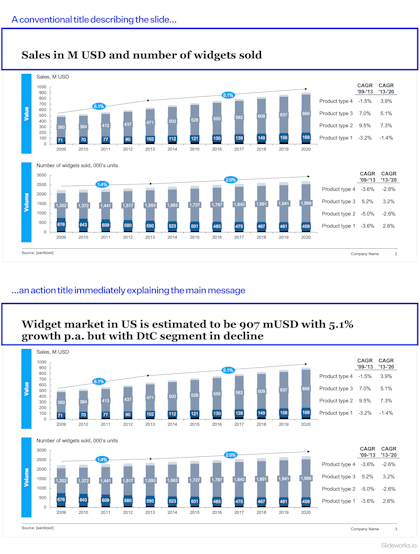
Action title vs conventional slide title (example)
Spending so much time on the title of a slide may seem like a nice-to-have last-minute task, but in reality action titles are one of the most important skills that management consultants are taught and lay the groundwork for creating top-tier presentations .
Action titles are important for several reasons:
- Clear communication: An action title allows the audience to immediately understand what the slide is about and why it’s important. This makes it easier for them to digest the full slide, and in turn makes it easier for you to get your main messages across.
- Cohesive storyline: Action titles help tie the whole presentation together in a cohesive story. They form the backbone and roadmap of your presentation and help both you and your audience follow the core logic and arguments, and ultimately better understand the suggested recommendations or next steps that you may present.
- Forcing function: Finally, action titles serve the crucial role as a forcing function to trim and improve your slides. If you are having trouble formulating a good action title or placing the slide in a series of slides, it more often than not means the slide is either not clear enough or is not necessary. A classic example is when you feel there are too many good points for it all to fit into one title. The wrong way to handle this is to shrink the title font size. The right way is to either divide that one slide into several slides with their own key takeaways, or to delete the data and information on the slide that is not contributing to the key takeaway.
See the same three slides below with conventional titles and action titles to get a sense of the power of action titles.
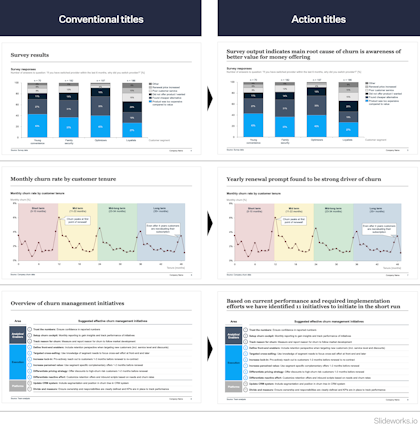
Crafting action titles may seem like an art form, but it is a skill that can be mastered with practice. Here are some steps to guide you in creating compelling action titles:
If you have already created your slide(s):
- Identify the core message Before attempting to write an action title, clearly define the main message of your slide or section. What is the key takeaway you want your audience to remember? The one thing they should know when reading this slide?
- Formulate the title Think about that core message. How would you say that if you had to do a voice-over? Write that voice-over down as the action title.
- Refine the title Now refine the title you just wrote. Make sure it is understandable as a stand-alone sentence, and that the words you use are active and convey an insight. See the end of this article for examples and best practices on action titles.
- Trim the content Finally, look at the content of the slide. Does it support that one main message? If there is any content on the slide that does not directly contribute to the core message, either delete it or cut-and-paste it into a new slide. Reformat the remaining content so the slide is once again complete. See more on the anatomy of a slide here .
If you are starting on a new presentation:
Best practice when crafting action titles is to write them as the first step of creating a presentation. By writing them as the first step you are ensuring your presentation is cohesive and clear from the beginning, and you often avoid a lot of unnecessary work with creating slides you end up not using.
- Pick an overarching framework for your storyline Your entire deck should narrate an engaging story. Many consulting decks follow the SCQA framework: Situation > Complication > Question > Answer Other successful frameworks might be Past → Present → Future or Problem → Solution → Evidence. See more on storylines and the vertical and horizontal flow of presentations here .
- Draft slide titles Divide each A4 page into four sections, each representing a slide. Craft a concise action title of less than 15 words for each slide which becomes the slide's title. This can also be done as a text document or similar. The goal is to be able to read the titles and from that alone understand the gist of the deck.
- Outline supporting data for each slide Would a graph or a table be helpful? Or perhaps a few bullet points in large font? Sketch out your first best guess of what type of data (numbers, text, images etc.) that you think is needed to support the slide title and that is plausible to get. This is likely to change during your project, but it provides you with a solid starting point to understand which data and analyses you should prioritize.
- Create a draft presentation Create the blank slides in PowerPoint with just the titles and potentially a sticker or text box describing the supporting data and content of the slide. Tweak the slide titles as you put them into PowerPoint following the best practices outlined below.
- Read through your entire storyline Once you’ve outlined your entire presentation, zoom out again and read only the slide titles. Does the story make sense and create a compelling case? Are there are slides that feel ‘off’ compared to the story? Slides that feel redundant? Anywhere there are holes in the story or logical jumps? Add empty slides with just titles to fill the holes, and move any slides that don’t feel strictly necessary to the back of the presentation or a separate document. The goal is a cohesive, clear presentation in as few slides as possible.
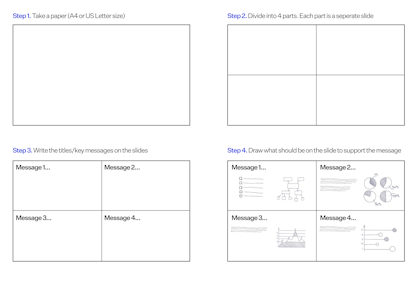
See more tips and tricks for accelerating your presentation creation here .
Although it can seem like a last thing, nice-to-have thing to have action titles this is actually one of the core parts of creating top-quality presentations and one of the easiest ‘hacks’ to taking your presentation up a notch.
- Be specific and concrete: Vague or generic action titles can dilute your message and fail to clearly get the main messages across. Instead, aim for specificity and concreteness, ideally including the most important quantitative takeaways. Your titles should provide a clear direction and measurable outcome, leaving no room for ambiguity. Generic : Supply chain processes can be optimized Specific : Optimize supply chain processes to reduce costs by 20%
- Keep it concise: Action titles should be concise and to the point. Ideally, they should fit within one or max two lines, up to 15 words. Strive for brevity without sacrificing clarity and impact. NEVER have a title that is longer than two lines. Too wordy : The analysis conducted shows that profits can potentially be increased by up to 15% by end of 2027 Concise : Analysis shows potential for up to 15% increase in profits by 2027
- Focus on takeaways not just summaries: Your audience is interested in conclusions, not processes or descriptions. Make sure your title reflects the takeaway. Summary : We interviewed experts and key internal stakeholders to identify potential cost-reduction levers Conclusion : 8 potential high-impact cost reduction levers identified Caveat: There may be slides where you explicitly want to summarize a process. This is fine, just make sure the slide focuses only on the process, and the results are included in a separate slide.
- Be insightful: …and in line with the point above, make sure your takeaway is actually insightful. Don’t write an action title that is so obviously true it provides no new information. Not insightful : Focus on sales will help increase revenues Insightful : Direct outreach is main driver of revenue growth – added focus here can increase revenues 10-15%
- Use an active voice: Opt for words that invoke a sense of action and avoid passive statements or verbs. This makes your titles more engaging for your audience. Passive : The structure and timeline of the project is determined by the Steering Group Active : Steering Group determines project structure and timeline
- Prioritize simplicity: The primary purpose of an action title is to communicate effectively. Focus on crafting titles that convey your message with precision and always err on the side of simple. Complex : Through implementation of efficiency levers, 7.4 M USD in costs per year can potentially be saved Simple : Implementation of efficiency levers can potentially save 7.4 M USD
- And finally, consistency is key: Maintain consistency in your action titles throughout your presentation, both in terms of narrative style and font size. This creates a sense of cohesion and reinforces your main story.
Creating compelling action titles is a powerful technique that can significantly enhance the impact of your PowerPoint presentations. By capturing attention, fostering clear communication, and inspiring action, action titles have the potential to transform your presentation from ordinary to extraordinary.
Download our most popular templates
High-end PowerPoint templates and toolkits created by ex-McKinsey, BCG, and Bain consultants

Consulting toolkit and template
A comprehensive library of slide layouts, templates, and typically consulting tools and frameworks.

- Business Strategy
This template, created by ex-McKinsey and BCG consultants, includes everything you need to create a complete strategy.

Create a full business case incl. strategy, roadmap, financials and more.
Related articles
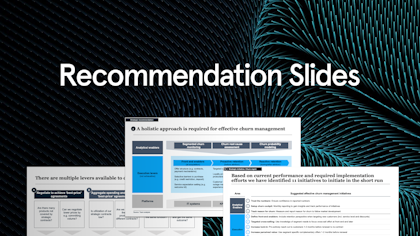
How to Write Recommendation Slides Like a Consultant (Examples and Template)
In this article, we discuss what a Recommendation slide is, how it is different from a Next Steps slide, and how to create a best practice version with examples from McKinsey, BCG, and Bain decks.
May 9, 2024
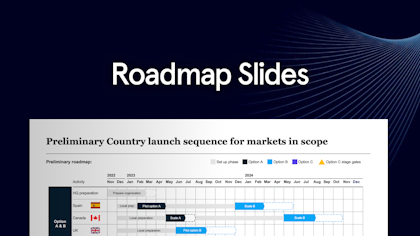
How to Write Roadmap Slides Like a Consultant (Examples and Template)
Roadmap Slides function like a map, laying out the key milestones, goals, activities, and timelines for achieving a particular objective. In this post, we will explore various roadmap slides and offer a few tips and tricks for building your own.
Apr 25, 2024
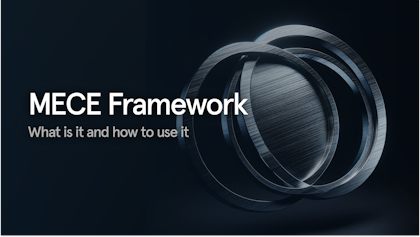
What is the MECE Framework – McKinsey Toolbox
In this post, we cover the MECE principle and how you can apply it to sharpen your thinking and simplify complex ideas into something that can easily be understood.
Dec 6, 2023

- Consulting Toolkit
- Market Analysis
- Market Entry Analysis
- Due Diligence Report
- Mergers & Acquisitions
- Digital Transformation
- Product Strategy
- Go-To-Market Strategy
- Operational Excellence I
- Operational Excellence II
- Operational Excellence III
- Consulting PowerPoint Templates
- How it works
- Terms & Conditions
- Privacy Policy
© 2023 Slideworks. All rights reserved
Denmark : Farvergade 10 4. 1463 Copenhagen K
US : 101 Avenue of the Americas, 9th Floor 10013, New York

- Speaking & Media

How to Create Catchy Presentation Titles
Alexia Public Speaking
I love words. And unfortunately, when I started out as a speaker, my presentation titles were stuffed full of them.
While there is not one formula for how to create catchy presentation titles to capture the attention of companies and event organizers, using too many words is a surefire way for your pitches and speaking submissions to land in a decision maker’s trash.
I’ve recently been purging old files, and in the process, unearthing my old speaker one-sheets and proposals. I’ve found some real title doozies!
2012 was a particularly “big year” when it came to keynotes. I had 10 listed and described on the speaking page of my website. And most of my titles were 15 words or more. (As you’ll see below, I also was collecting colons like they were going out of style.)
For example, for what would become my Discover Your ‘Secret Sauce’ as a Speaker signature presentation, instead, I had—
Share Your Story, Morning Glory: How to Use Public Speaking to Effortlessly Attract the Right Clients.
This was also the year I developed my Step into Your Moxie® keynote. But rather than call it Step into Your Moxie or How to Speak with Moxie, instead I was sweet on my colons again and went with the mouthful—
Step Into Your Moxie: Listen to Your Voice, Sculpt Your Message and Speak with Confidence and Impact.
Each time I run The Spotlight Speaker Accelerator and work with coaches, consultants and experts on creating catchy presentation titles for their keynotes and business and association presentations, I see many of the same mistakes I made.
Here are three tips for creating catchy presentation titles for your speeches that event organizers, meeting planners, and business leaders will love.
Create a title that zeroes in on your “idea worth spreading .”
While it’s okay to have some pizzazz in your presentation title, you still want it to accurately reflect the key idea you want your audience to take action on and not be too open for interpretation.
Let your title communicate your point of view on your topic.
Decision makers get pitched oodles of similar topics, and it’s easy for speakers and their submissions to sound alike. When your title reflects your unique voice and, if appropriate, how you are taking a fresh (and maybe even disruptive) approach to a familiar topic, this will help you and your presentation to stand out.
And last, but most certainly not least…
Use titles that contain 8 words or less.
While, unfortunately, this isn’t always possible, in-demand speakers rarely have excessive words and colons in their titles. Rather, their titles are short, clear, and crisp.
In case you are curious, here are my most frequently requested keynotes .
Have a catchy presentation title that you love?
That captures your core brand message?
Consider registering it as a trademark in order to protect your intellectual property. Doing this with Step into Your Moxie® was one of the most important business decisions I made – well worth the nominal cost of trademark registration because it provides important protection against copycats.
Similarly, before you decide, yes, this is my smokin’ hot presentation title, be sure to check online and ensure that you are first to market on your idea. It’s much easier to tweak your title before you start using it in the world and getting known for it.
Privacy Overview
| Cookie | Duration | Description |
|---|---|---|
| __cfruid | session | Cloudflare sets this cookie to identify trusted web traffic. |
| cookielawinfo-checkbox-analytics | 11 months | This cookie is set by GDPR Cookie Consent plugin. The cookie is used to store the user consent for the cookies in the category "Analytics". |
| cookielawinfo-checkbox-functional | 11 months | The cookie is set by GDPR cookie consent to record the user consent for the cookies in the category "Functional". |
| cookielawinfo-checkbox-necessary | 11 months | This cookie is set by GDPR Cookie Consent plugin. The cookies is used to store the user consent for the cookies in the category "Necessary". |
| cookielawinfo-checkbox-others | 11 months | This cookie is set by GDPR Cookie Consent plugin. The cookie is used to store the user consent for the cookies in the category "Other. |
| cookielawinfo-checkbox-performance | 11 months | This cookie is set by GDPR Cookie Consent plugin. The cookie is used to store the user consent for the cookies in the category "Performance". |
| viewed_cookie_policy | 11 months | The cookie is set by the GDPR Cookie Consent plugin and is used to store whether or not user has consented to the use of cookies. It does not store any personal data. |
| Cookie | Duration | Description |
|---|---|---|
| popupally-cookie-5 | 10 years | This is a cookie set by our popup plugin PopupAlly. |
| popupally-cookie-8 | 10 years | This is a cookie set by our popup plugin PopupAlly. |
| popupally-cookie-9 | 10 years | This is a cookie set by our popup plugin PopupAlly. |
| thrivecart_v2 | session | This is a cookie used by ThriveCart, our shopping cart provider. |
| Cookie | Duration | Description |
|---|---|---|
| _gat | 1 minute | This cookie is installed by Google Universal Analytics to restrain request rate and thus limit the collection of data on high traffic sites. |
| Cookie | Duration | Description |
|---|---|---|
| _ga | 2 years | The _ga cookie, installed by Google Analytics, calculates visitor, session and campaign data and also keeps track of site usage for the site's analytics report. The cookie stores information anonymously and assigns a randomly generated number to recognize unique visitors. |
| _ga_2QDVS0SQDX | 2 years | This cookie is installed by Google Analytics. |
| _gid | 1 day | Installed by Google Analytics, _gid cookie stores information on how visitors use a website, while also creating an analytics report of the website's performance. Some of the data that are collected include the number of visitors, their source, and the pages they visit anonymously. |
| CONSENT | 2 years | YouTube sets this cookie via embedded youtube-videos and registers anonymous statistical data. |
| vuid | 2 years | Vimeo installs this cookie to collect tracking information by setting a unique ID to embed videos to the website. |
| Cookie | Duration | Description |
|---|---|---|
| _fbp | 3 months | This cookie is set by Facebook to display advertisements when either on Facebook or on a digital platform powered by Facebook advertising, after visiting the website. |
| fr | 3 months | Facebook sets this cookie to show relevant advertisements to users by tracking user behaviour across the web, on sites that have Facebook pixel or Facebook social plugin. |
| VISITOR_INFO1_LIVE | 5 months 27 days | A cookie set by YouTube to measure bandwidth that determines whether the user gets the new or old player interface. |
| YSC | session | YSC cookie is set by Youtube and is used to track the views of embedded videos on Youtube pages. |
| yt-remote-connected-devices | never | YouTube sets this cookie to store the video preferences of the user using embedded YouTube video. |
| yt-remote-device-id | never | YouTube sets this cookie to store the video preferences of the user using embedded YouTube video. |
| Cookie | Duration | Description |
|---|---|---|
| m | 2 years | No description available. |
DETROIT, JUNE 20-21 PUBLIC SPEAKING CLASS IS ALMOST FULL! RESERVE YOUR SPOT NOW

- Public Speaking Classes
- Corporate Presentation Training
- Online Public Speaking Course
- Northeast Region
- Midwest Region
- Southeast Region
- Central Region
- Western Region
- Presentation Skills
- 101 Public Speaking Tips
- Fear of Public Speaking
Catchy Presentation Titles Are the Start of a Great Presentation

A Catchy Presentation Title is Important for Audience Satisfaction
Think about the last time you went to a conference that has multiple breakout sessions going at the same time. If you are like most people, you first scanned the list of titles. Almost instantly, you eliminated a few based solely on the topic or title. The titles that you looked at created an impression of the speech. Once you narrowed down your choices, only then do you move on to the description, etc. In that instant where you were scanning the titles, though, you probably had this inner monologue going. “Hhhmmmm… Nope. Not worth my time. Nope. Sounds boring. Nope. That one is unrelated to anything of interest to me. Aaahhh… That one might be okay.”
One of the real, closely-held, public speaking secrets is that every audience member has this inner monologue . This inner monologue occurs before every single meeting and every single presentation that we attend. In most cases, just as when we looked at the breakout session list, the answer we receive is, “Nope. This seems like a waste of my time.”
Examples of Presentation Titles that Make People Yawn
Here are a few titles that tell the audience that your presentation will be a snoozefest.
- Quarterly Financial Report
- Software Update
- Project Report
- Goals for 20__ [Fill in Your Own Year]
- Why We Need to Make Changes in Our Internal Processes

It is our job as the presentation designer (or deliverer) to make people want to pay attention to us. If you start with a great title, you are more likely to accomplish this task.
Presentation Title Generator
Follow this step-by-step approach, and your audience will want to hear you speak.
Create a One-Sentence Statement of What Your Topic is About.
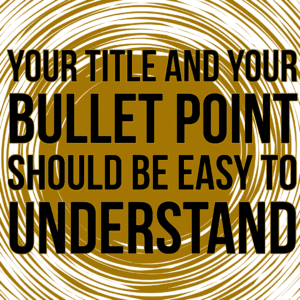
- We Exceeded Our Corporate Goals and Increased Profit Last Quarter.
- The New Software Update Closed a Few Security Risks for Our Customers.
- The ABC Building Project is Behind Schedule.
- This Year, We Will Increase Revenue by $200,000 by Focusing on Repeat Business.
- Department Heads Need to Communicate Team Activities Better.
Just by forcing yourself to make your title into a complete sentence, you will narrow the topic down dramatically. If you look at the difference between the first list and the second, the second is more interesting already.
Identify Why the Audience Would Care About this Topic?
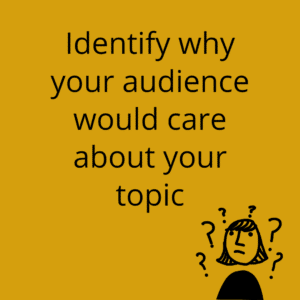
- Your Quarterly Bonus Has Increased.
- Your Customers are Less Likely to Experience a Data Breach.
- If We Adjust Our Plan, We Can Get Back on Schedule without Incurring Overruns.
- Your Commissions Will Also Increase.
- You Can Reduce Your Overall Department Costs.
Although we like to think that department heads care deeply about company revenue and profit, in reality, most of us are pretty self-centered. However, the department heads care very deeply about their bonuses. Outside of the tech folks, no one really cares about website security. However, if a company has a data breach, the entire company will have new challenges to deal with.
Combine the Sentence in Step #1 With the Benefit in Step #2.
Now that you have the two pieces, just put them together. When you do, you will create a series of catchy presentation titles .
- We Exceeded Our Corporate Goals and Increased Profit Last Quarter, So Your Quarterly Bonus Has Also Increased.
- Your Customers are Less Likely to Experience a Data Breach Because We Closed a Few Security Risks in the Recent Update.
- If We Adjust the Project Plan on the ABC Building, We Can Get Back on Schedule without Incurring Overruns.
- This Year, We Will Increase Revenue by $200,000 (And Commissions by $25,000) by Focusing on Repeat Business.
- If We as Department Heads Can Communicate Our Team’s Activities Better, We Should Be Able to Reduce Department Cost Significantly.
Maybe these presentation titles aren’t perfect, but you have to admit, they are dramatically better, now.
Compare the Two Titles
Originally, we had, “Quarterly Financial Report.” We ended up with, We Exceeded Our Corporate Goals and Increased Profit Last Quarter, So Your Quarterly Bonus Has Also Increased.” Which would you rather sit through? Guess what? Your audience thinks the same way. So, if you want to catch the attention of your audience right away, realize that catch presentation titles can help.
By the way, once you have a great title, the post called How to Design a Presentation Quickly is a good second step. In addition, we have a free Online Speech Creator that walks you through the entire process step-by-step. Also, make sure to visit our 101 public speaking tips blog post.

Podcasts , presentation skills | presentation skills
View More Posts By Category: Free Public Speaking Tips | leadership tips | Online Courses | Past Fearless Presentations ® Classes | Podcasts | presentation skills | Uncategorized
How to write a catchy presentation title
Sep 15, 2022
Posted by: Gemma King
Title writing.
It’s not as easy as you might think.
Take this article, for example. Can we really call an article about writing catchy titles “How to write a catchy title”? It’s hardly… well, catchy.
Fortunately for you, your presentation title doesn’t need to be anywhere near as functional. You don’t have to be easy to find when people google advice. You’ve got (almost) free rein to come up with something truly catchy.
That comes with its own challenges too, of course.
So I’ve gathered together some top tips from Steve Rawling of Storyteller Tactics , and the internet at large.
Let’s get to work!
Why do you need to write a catchy presentation title?
For optional-attendance events, your title needs to catch the attention of your audience enough for them to consider attending. It doesn’t matter how good anything else you have prepared is, if they don’t like the title, they’ll never get to see any of that stuff.
Of course, for many work-related presentations, your audience is pretty much guaranteed. It’s a work thing, so the people who need to be there, will be. Even then, a catchy title is important to set the tone of the session. And you don’t want that tone to be boring, do you?
We want attendees who feel anticipation, not dread or (worse) indifference.
That’s the Why; here are some Hows.
Techniques for writing catchy presentation titles
Buckle up, we’re starting with… worms!
Our community recently explored Mindworms in a live session to discover why some ideas stick in our minds and our memories while others fade into obscurity. Here are some key points you can apply to writing titles. If you include a handful of these things, you’re on the right track:
- Simplicity : is it easy to understand and repeat?
- Unexpectedness : is it surprising in some way?
- Concreteness : does it paint a clear picture?
- Emotionality : does it evoke hopes and/or fears or engage our sense of identity ?
- Storyness : does it describe some sort of causal chain (cause and effect)?
- Sensory : does it include elements like touch, smell or taste?
- Repetitiveness : are any elements or words repeated to help it stick?
- Rhyme : do you have any rhyming words that will help people recall it easily?
- Metaphors : can you use a metaphor to simplify the message?
I’d also consider adding alliteration and humour to this list; the latter particularly if it’s an internal-facing presentation with a known audience.
For example, you might not be particularly enthused about joining a session called: ‘ First-quarter Financial Report on Product X ’ (although it does use concreteness in mentioning ‘first quarter’ and is easy to understand).
You might be slightly more enthusiastic about ‘ Breakeven and beyond; Project X’s first quarter ’, and positively excited about ‘ Product X; the cash cow whose milk smells like success ’. The first employs hope (‘breakeven and beyond’), which is an emotion, as well as being simple and concrete. The second uses a metaphor (cow/milk), sensory words (smell), emotions are evoked (success) and is unexpected. Perhaps too unexpected, but it takes all kinds!
Story approaches
Every good story needs a title, so it’s no surprise that Steve Rawling, Author of Storyteller Tactics, has also covered this topic.
We can start off with the Secrets and Puzzles Storyteller Tactic - a fantastic way to format your presentation, by the way. But even if you don’t use it throughout your talk, you can use it in your title. People love secrets and puzzles. And you can create the sense of a secret about to be shared, or a puzzle to be solved, by using specific ‘keywords’:
- Secret, confidential, insider, exclusive, hidden, restricted, banned, untold, forgotten.
- Puzzle, riddle, odd, bizarre, unexpected, ironic, paradox, peculiar, mystery.
But remember - and this is important - if you promise a secret or something puzzling, you must deliver. As Steve says, the use of these words without any type of secret is just clickbait.
So let’s try the exercise again. Can you think of a better way to phrase this title? ‘ Exit interview data: 2022 learnings ’.
The presentation sounds like it’ll talk through the findings of HR’s interviews with team members who have left since the start of the year. This is prime material for a secret-inspired headline (what secrets did the interviews hold?) or a puzzle (how can the data be used to inspire change?).
Something like “ Famous last words; what secrets do 2022’s exit interviews hold? ” or “ Unexpected push factors: can 2022’s exit interviews catalyse change? ”. Both of these are concrete (giving a specific time frame), simple enough for the specialised audience to understand and promise something secretive or surprising.
If there doesn’t seem to be an appropriate secret or puzzle, there are lots of other Storyteller Tactics cards you can use to inspire an intriguing title. For example, Order & Chaos , Good & Evil and Curious Tales .
Another great Storyteller Tactic to use when searching for the perfect title is That’s Funny . It has you pick out something about your presentation/story that is a bit odd and makes you go “ Hmm, that’s funny… ”, or perhaps a person that is acting unusually. Something a little bit out of the ordinary (and unexpected) is a good way to reel people in. And talking of reeling people in…
Finally, Story Hooks is a fantastic tool. Steve looked at 1,000 TED talks to look for story hooks in their titles. He found a tonne of useful approaches: questions, surprises, ironies, relatability, superlatives and of course - knowledge. The promise that you will impart your hard-earned experience, in simple language, so that others may benefit from it, is a powerful one.
Other title-writing tricks to try
The internet is full of suggestions, some great and some utterly absurd. This list sticks to the former category! Pick a couple that are relevant to your presentation and give them a whirl.
- Use your title to create a knowledge vacuum. Is the content of your talk going to change something big? "This talk could change the way we talk to customers forever" - it lets people know that they'll be missing out on something important if they don't pay attention.
- Look for inspiration elsewhere. Probably not in your own calendar - catchy titles are still not the norm in most industries! Look at events online - or local newspaper headlines. They are rife with creativity (a little too much of it, sometimes!).
- Ask a question ; it gets people thinking about the answer straight away! And once they have started wondering, they'll be invested in finding out what the real answer is.
And we might be biased here, but the Pip Club newsletter (Pip's Practical Prompts) is a goldmine if you're looking for catchy titles and punchy, shorthand content inspiration.
Level up your career with Pip Club
Join 100,000+ leaders who get unique tips every week on storytelling, leadership and productivity - plus exclusive how-to guides, first-dibs on upcoming Pip Decks and our very best discounts.
Nearly there...
Check your inbox to confirm your email.

No spam, no email sharing - ever. Privacy Policy
One of the few newsletters I look forward to. — Dave Cunningham, Head of DesignOps @ NHS

You might find these articles useful

Answer this question, become a better storyteller
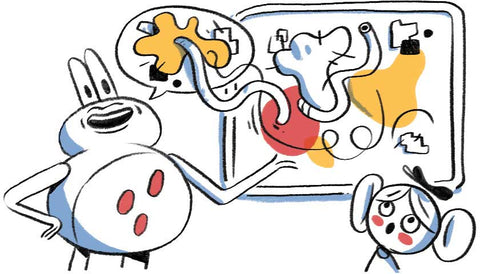
Show & Tell (live session)
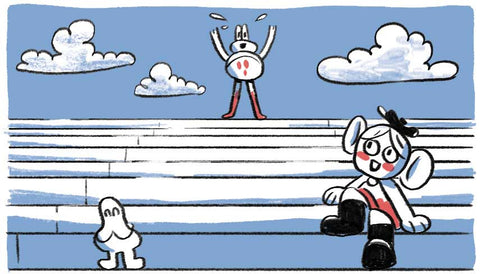
Rags to Riches (live session)
- Public Speaking
- Visit our Store
How to Write the Perfect Titles for Your Slides
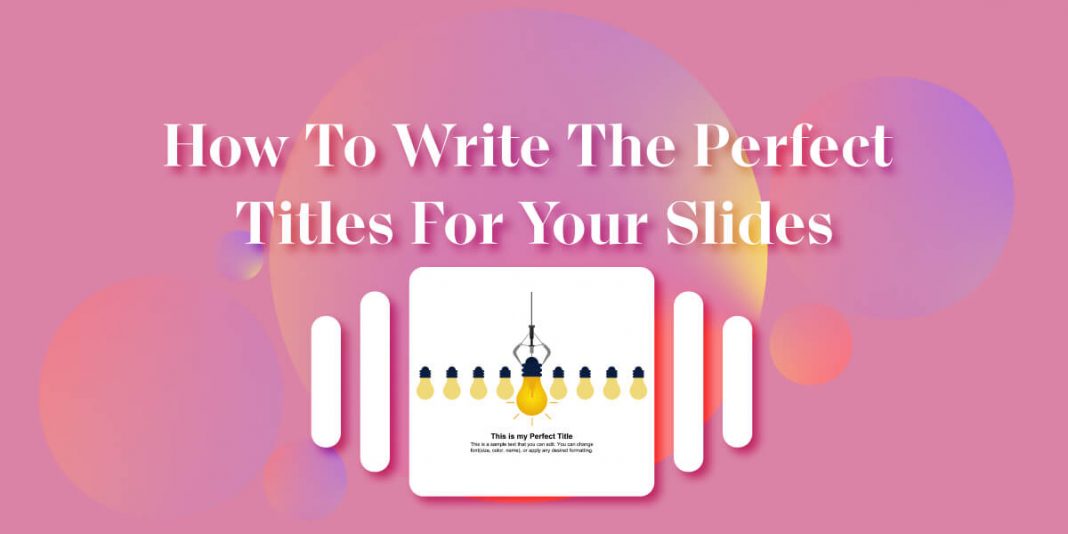
8 Effective Ways to Introduce Yourself in a Presentation
How to write a problem statement slide, pro tips to create an impactful employee induction presentation, powerful endings: how to conclude a presentation for maximum impact.
When it comes to presentations, the first thing your audience sees is the title of each slide. A well-crafted title not only grabs attention but also gives your audience a clear idea of what to expect from each slide. Contrary to this, a poorly-written title can leave your audience confused or disinterested.
Even though slide titles are simple, they are an effective addition to your presentations. However, they are often missed or ignored by the presenters, and eventually, their presentations fail to grab the attention of the audience.
In this article, we’ll delve into the art of creating the perfect titles for each of your slides. Whether you’re giving a presentation for work, school, or a personal project, these tips will help you effectively communicate your message and keep your audience engaged.
1. An Action
One of the most important aspects of an effective slide title is what it tells the audience. Basic slide titles, such as “introduction” or “progress report,” disappear into the background when you add them on top of a slide.
Titles for your slides should ideally describe the actions or tasks that your audience will be taking on each slide. This will be a much better guide than just telling them the contents of the slide. Examples of this can be, “get to know the team” or crafting a title for reporting progress like “our efforts paid off!” and more.
2. Create a Title, not a Description
It is well-known that a powerful title is the most effective way to hook the audience. This does not just refer to the content or intention of the title, but rather, how you display the title. The most basic rule here is to make it look apart. You can do so by increasing the size of the text and making it bold. You can also use a serif font (optional). Another way is to use contrasting colors for the title, making it pop.
A simple act of making this visual shift will have a major impact on how people perceive your slide titles.
3. Make it Succinct and Simple to Understand
A slide title, like a title for an article or blog, needs to be simple, clear, concise, and easy to understand. As its main purpose is to help the audience understand the point of the slide, a simple and crisp title works best. It does not take the audience away from the essential information.
A perfect slide title fits in one line and is not too wordy. You can achieve this by removing any extra words. If you need help, take inspiration from the titles of your favorite blogs and see how they form their titles.
4. Consider the Context and Tone
Titles set the tone; you know that. What you might miss is how much impact a fitting title can have and how catastrophic an out-of-place title can be.
Picture this; you are giving a regular update in a corporate meeting room. You begin your professionally created presentation with the slide titles in funky fonts, emoticons, and clichéd puns. It will make your audience disinterested right from the beginning. On the other hand, formal and solemn titles would fail to grab the attention and interest of students in a classroom. Thus, your slide titles must be perfectly crafted to fit your particular use case.
Keeping these tips in mind when deciding on slide titles is sure to help you ace your presentation. However, there might be some cases where you might have to let go of one or more of these rules. That may be required where the content of the slide is either too crucial to add a title, which may be distracting, or if the slide is part of a sequence and does not require a separate title.
In a nutshell, crafting the perfect titles for your slides is an important aspect of giving a successful presentation. By following the tips outlined in this article, you can set the stage for each slide. Remember to keep your titles concise and to the point, use strong action verbs, and avoid using jargon or cliches.
We hope this article was informative and helped you improve your slide titles.
More articles
6 best powerpoint tips and hacks for engaging presentations, 9 tips to create a perfect powerpoint presentation, 50+ powerpoint shortcut keys to save you time (for windows and macos), leave a reply cancel reply.
Save my name, email, and website in this browser for the next time I comment.
Latest Articles
Financial literacy: importance, components, and resources, 8 tips to write a memorial speech (with a sample speech), 7 unique presentation ideas to make your message more receptive , why should you know the venue before the presentation, 6 tips you need to follow to become the perfect panelist.
© 2024 Collidu.com. All Rights Reserved.
Information
- Visit Our Store
- Free PowerPoint Templates
- Google Slides Themes
Popular Categories
- Presentation Ideas 43
- Public Speaking 21
- Presentation Design 10
- Business 10
- PowerPoint Tips 4
- Google Slides Tips 1
Editor Picks

Blog – Creative Presentations Ideas
infoDiagram visual slide examples, PowerPoint diagrams & icons , PPT tricks & guides
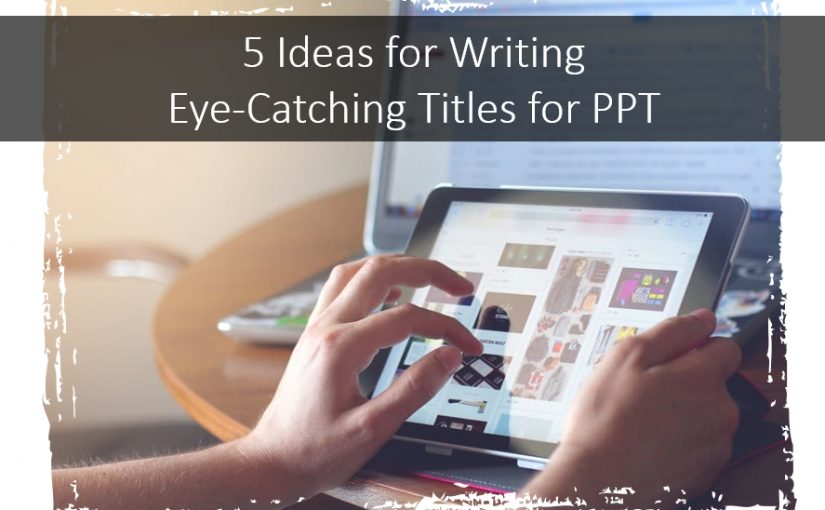
5 Ideas for Writing Eye-Catching Title for Your Presentation
Last Updated on March 1, 2024 by Rosemary
If you don’t hook your audience from the first seconds you start your presentation, you will lose them until the end. Check this blog for ideas on how to write an eye-catching title for your next presentation.
Explore our Business Performance PPT Reports category on the website for more resources to boost your presentation impact.
One of the first things your audience sees in the first 5 seconds of your presentation is the title. They usually have an idea of what your presentation is going to be about before you even show up.
Awesome presentations start with catchy titles, which appeal to the audience. Your listeners will judge if your presentation is interesting and clicks with them or not based on your title. So if you really want people to listen to you, you need an eye-catching title for your PowerPoint presentation. Keep reading the article below and find out how you can nail it when you create your next presentation title.
How to Write an Eye-Catching Title for PPT Presentation
1. promise relevant benefits.
People become interested in your presentation when they discover from the title that they might find the answer to their questions. The “how-to” titles will always work if you want to influence people and convince them that you really have the solution to their problems. You don’t even need too many words when you create such titles. You will offer them the benefits from the title and make them curious to hear more about what you have to say.
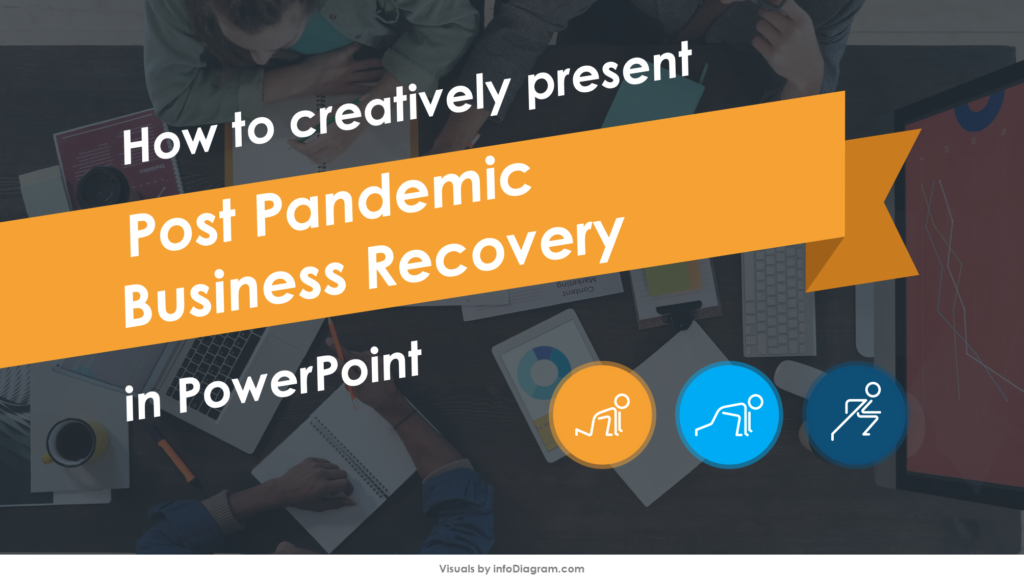
(Click this image or any others to get to this slide source)
2. Come up with a story
When you decide to use such a title, it is very important that your presentation includes examples. This is a title that asks for real-life examples. You can even share a personal story and thus create an emotional connection with your audience . What is more, when you use these titles, you should always add some adjectives to A and B to add even more emotion to your eye-catching title.
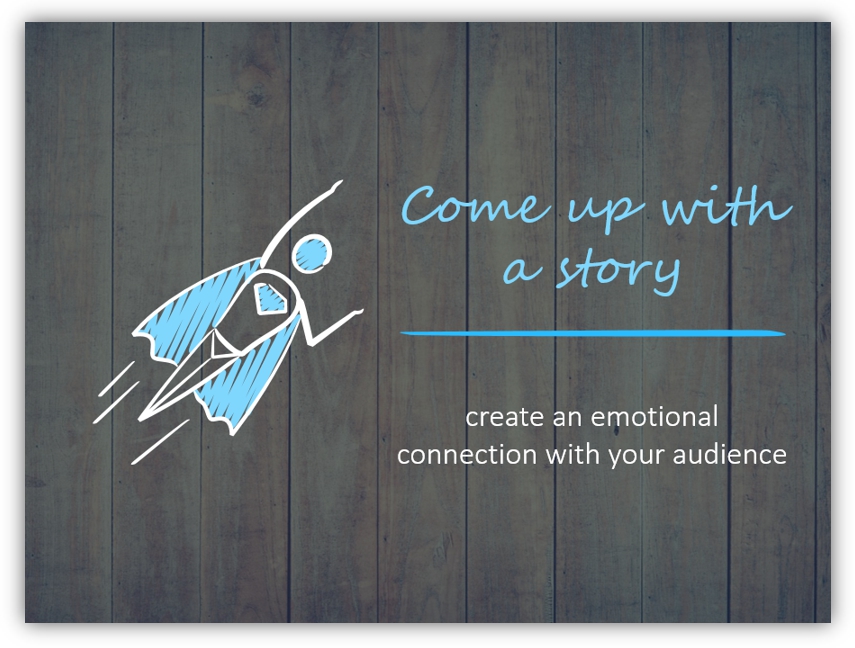
3. Make your audience curious
When you are invited to make a speech, this means that you have something important to say. This is why you should make the most out of it. However, if you want to keep your audience engaged until the end, you should grow the suspense gradually and make them curious.
In the example below, you can see how we used a big ribbon on the left to focus on the text and icons while making the background more subtle. You can use this technique to make sure the text is readable when you have many colors on the background picture.

People will always want to hear what’s new on the market. Use your presentation title to provoke interest and make them curious about the latest trends.
4. Use numbers in front of your title
Let’s do a simple exercise of the imagination. Which title seems more interesting to you? “Critical concepts to teaching mathematics” or “Five critical concepts to teaching mathematics”? Even if you are an expert in mathematics, wouldn’t you be curious to find out which of those five critical concepts you could use to teach mathematics? If you wonder which is the “magical” number you should use, the answer is pretty simple.

Depending on how big your presentation is, you can decide which is the number of benefits or methods you want to talk about. Usually, three is the “magical” number as it allows you to go into details and show your audience that you have a really solid case in your presentation. It is always better to go deep, rather than wide.
5. Tell your audience what to do
Creating a headline with a command in it doesn’t mean that you will scare your audience and lose them. On the contrary, people need guidance and they are interested in presentations where they find out how to do things better.
In Conclusion
First impressions always matter. Your title is the first impression you create for your presentation. Therefore, your title should convince your audience from the moment they read the agenda that your presentation is worth attending. Build curiosity and keep them in suspense until the end of the presentation.
Your title will also help you be more credible and show your audience that you are an expert in your field. Moreover, don’t forget to keep your titles short and concise. You should also take care to run a grammar check with the assistance of an AI tool to make sure that there aren’t any errors in your title. This is how you will help your audience to get the main idea and wait anxiously to hear more during the presentation.
Not sure how to best represent your ideas or show a particular topic? Reach out to us. We’d love to hear from you and help.
For more inspiration, subscribe to our YouTube channel:
Further Resources
If you’d like to get more inspiration for transforming your next presentation, check out these articles:
- How to Create Unique Attractive Tables in 4 Steps
- Get rid of bullet points! Three creative list presentation ideas
- How to make a presentation when you have no time
Author: Leona Henryson – freelance writer and UX designer. Also, she is a contributing writer for various blogs, including Writersquad. When she is not writing or designing, she is swimming, hiking, and, weather permitting, snowboarding.
How To Write The Perfect Action Titles For Your Slides
Table of contents, what is an action title.
An action title is a slide title or lead-in that articulates the key implication or ‘so-what’ of the slide.
As a consultant, you’re often communicating with busy executives. Action title’s make your slides easier to understand, because your reader doesn’t have to dive into the detail of the slide body and try to uncover the key takeaway themselves.
Action titles compared to traditional titles
To make things clearer, let’s compare action titles with traditional slide titles.
An inexperienced Consultant or Business Analyst might build a slide that shows a company’s revenue and costs over time. They might label that slide:
“Overview of Revenue and Costs”
As a reader, you now have to study the charts and data in the slide body to uncover the so-what of the slide. And if you’re a busy executive, you really don’t have the time or inclination for that.
A more experienced Consultant would use an action title. It might look something like:
“Over the last 5 years, costs have grown 7% per year, which is double revenue growth”
As you can see, it’s much easier for the reader to understand exactly what you’re trying to communicate in your slide.

Download 120+ strategy consulting presentations for free
Looking for slide inspiration? Download 120+ consulting slide decks from top strategy consulting firms, such as McKinsey, BCG and Bain!
How do action titles link with the slide deck storyline?
So far, we’ve only talked about how action titles can be used to communicate the so-what of your individual slide. But let’s zoom out and consider your complete slide deck.
The purpose of your slide deck is to persuade your audience and lead them to a conclusion. To do that, your slide deck should have a clear and compelling situation-complication-resolution storyline .
Your slide deck’s storyline will naturally appear from insights gathered through research and analysis. You’ll just need to ensure that you have supporting data for the storyline and you’re using the appropriate tone and positioning .
It is recommended that you write your storyline in a Word document before you start building your PowerPoint slides. Then once you’re done, you effectively write your storyline as action titles for each slide of your presentation.
So as you flip through the slides in your slide deck, your action titles will communicate the storyline that you wrote before you started building your slides.
In other words, your action titles communicate the horizontal flow of your storyline throughout the slide deck.
Best practices for writing action titles
There are a few key principles that you can use to ensure that you write good action titles, they include:
- Be specific, not generic: Most importantly, you need to ensure that your so-whats are actually insightful . Don’t write action titles that are obviously true. For example, “customer acquisition requires a strong product proposition” is an extremely uninsightful action title.
- Communicate outcomes: Your audience is interested in outcomes, not processes. For example, instead of writing “we interviewed 13 customers to identify problems with the onboarding process”, you should write something like “customer interviews revealed that the onboarding process took 3x longer than competitors”.
- Quantify your insights: Ensure that you quantify action titles where you can. For example, “To achieve our revenue target, we must increase revenue by ~$25m”.
- Scope your insights: Similarly, ensure that you time-bound action titles where you can. For example, “To achieve our FY22 revenue target, we must increase revenue by ~$25m”.
- Use the fewest words possible: Avoid “consulting speak” and make the best use of the limited space for your action titles by being as brief and to-the-point as possible. We recommend using the Draft, Drain, Refine process for sharpening your action titles and ensuring that are clear.
Examples of action titles
Now you know how to write good action titles, let’s take a look at some examples from real consulting firms, such as McKinsey, BCG and Bain.
These action titles come from our Slide Library . The slide library contains over 100 strategy consulting slides from real consulting firms. You can browse and filter to learn how strategy firms build slides (or write action titles), and for inspiration for your own slides.
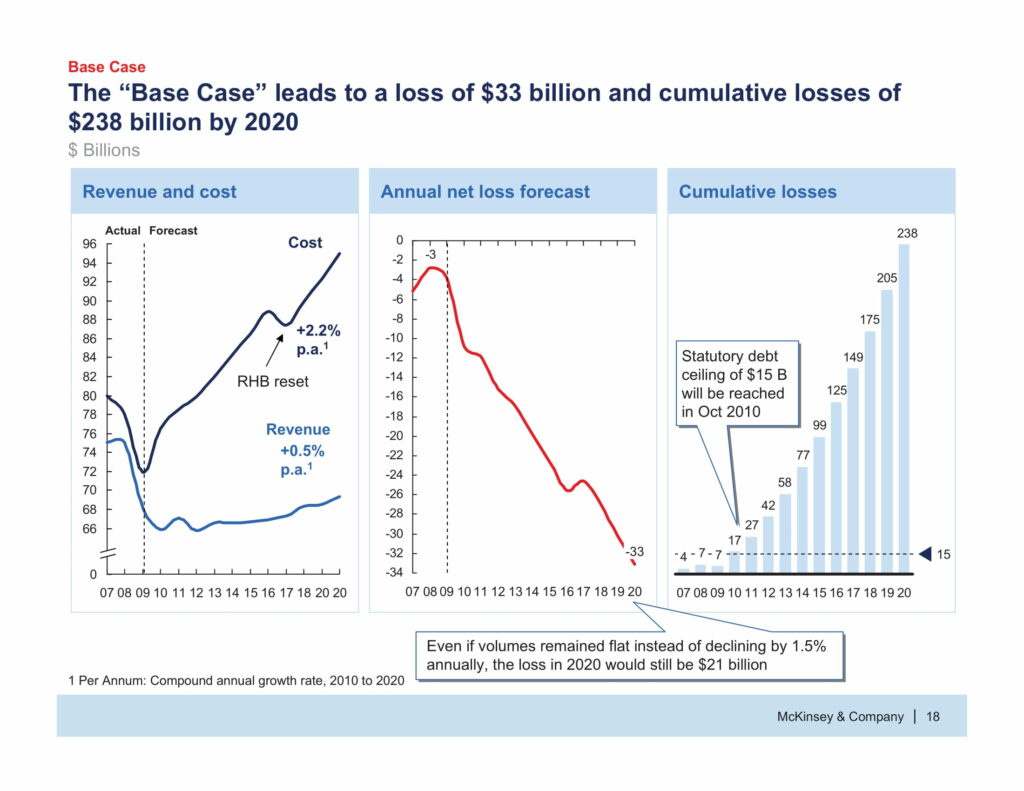
Blog > 10 creative Ideas for your Title- and End-Slides in Presentations
10 creative Ideas for your Title- and End-Slides in Presentations
11.13.19 • #powerpointtips #presentation.
Of all the slides in a PowerPoint presentation, the ones that are without a doubt the most important ones are the first and the last one. It makes perfect sense – the title slide sets the general tone. Make it boring and you’ll loose your audience’s attention within the first few minutes. If you’re making it exciting and innovative on the other hand, you’re taking a big step towards giving an amazing presentation and having an engaged audience. It is very similar with the final slide. It will be the one that people are going to remember most, the one that is supposed to make people leave the room thinking ‘Wow! What a great presentation!’ A bad ending could even mess up what would otherwise be a good performance overall (just think of a good TV show with a bad ending…).
The most common mistakes for title and final slides
If you asked 100 people what belongs on your PowerPoint’s title slide, the majority would answer ‘The title, maybe a subtitle, the presenter’s name and company, the date’. That kind of title slide is alright, but you usually say all of these things in the beginning of a presentation anyway. Also, it is very likely that most of your attendees know these things – they usually signed up for it after all. So what’s the point in listing all of that information on your title slide, when you could also use it for making a stunning first impression? Not only the title slide is commonly designed in an uncreative and conventional way. Too often, you can see PowerPoint presentations ending with the ‘Any Questions?’ or even worse – the ‘Thank you for your attention’ slide. ‘Thank you for your attention’ is a set phrase that has been said so many times it can’t possibly be delivered in an authentic way anymore. Therefore, it’s better to think of something else for your grand final. Finding an unconventional ending that suits your presentation style makes you seem much more charismatic and authentic than using an empty phrase.
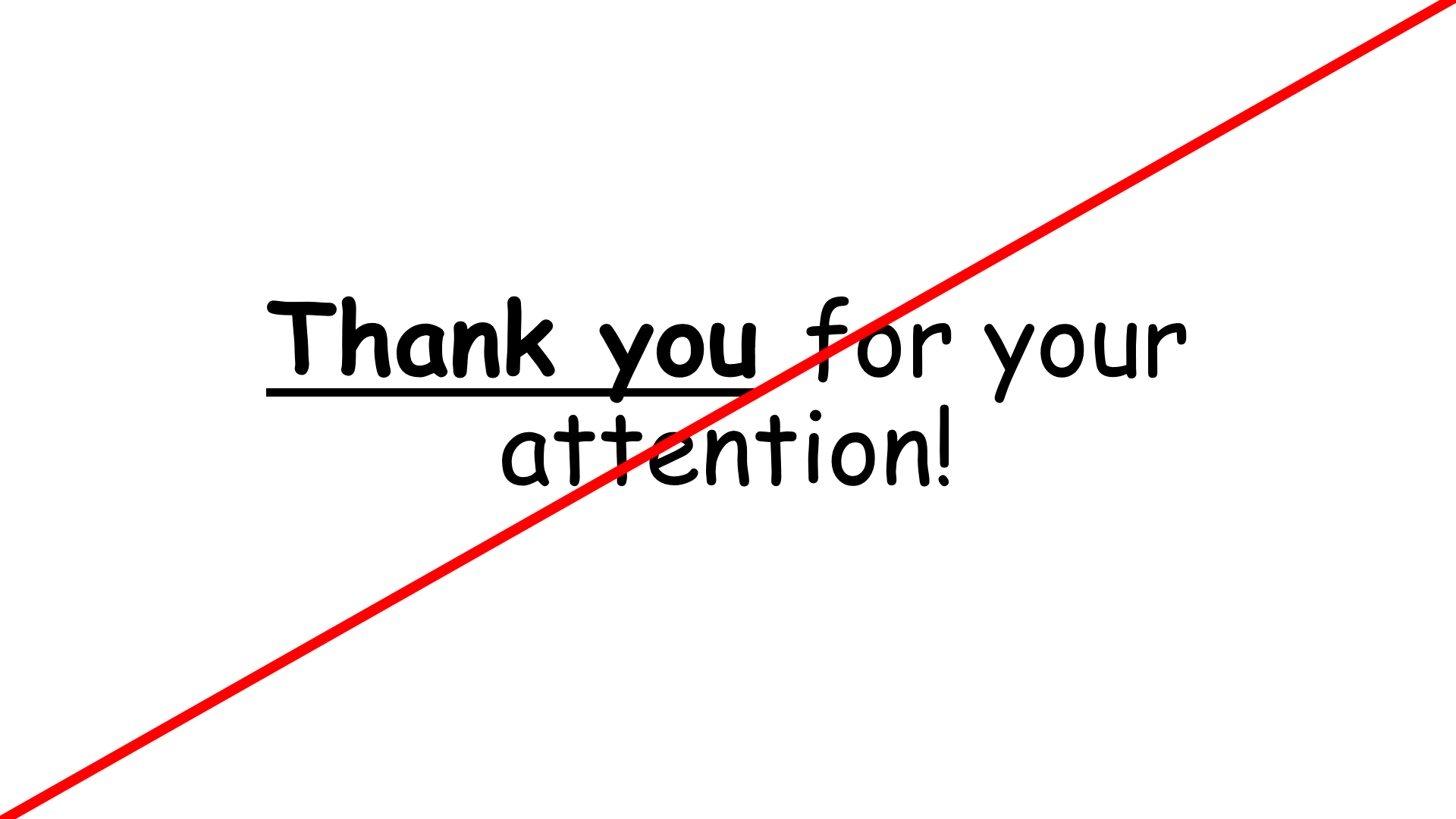
1. An inspiring quote
An inspiring quote on your slide is a perfect way to both start and finish your presentation. Well, it does not have to be inspiring. It could be any quote that is somehow connected to your presented topic. Just have fun looking through books and the internet to find interesting quotes that you want your audience to hear. Good pages to look at for inspiration are goodreads and brainyquotes.com .
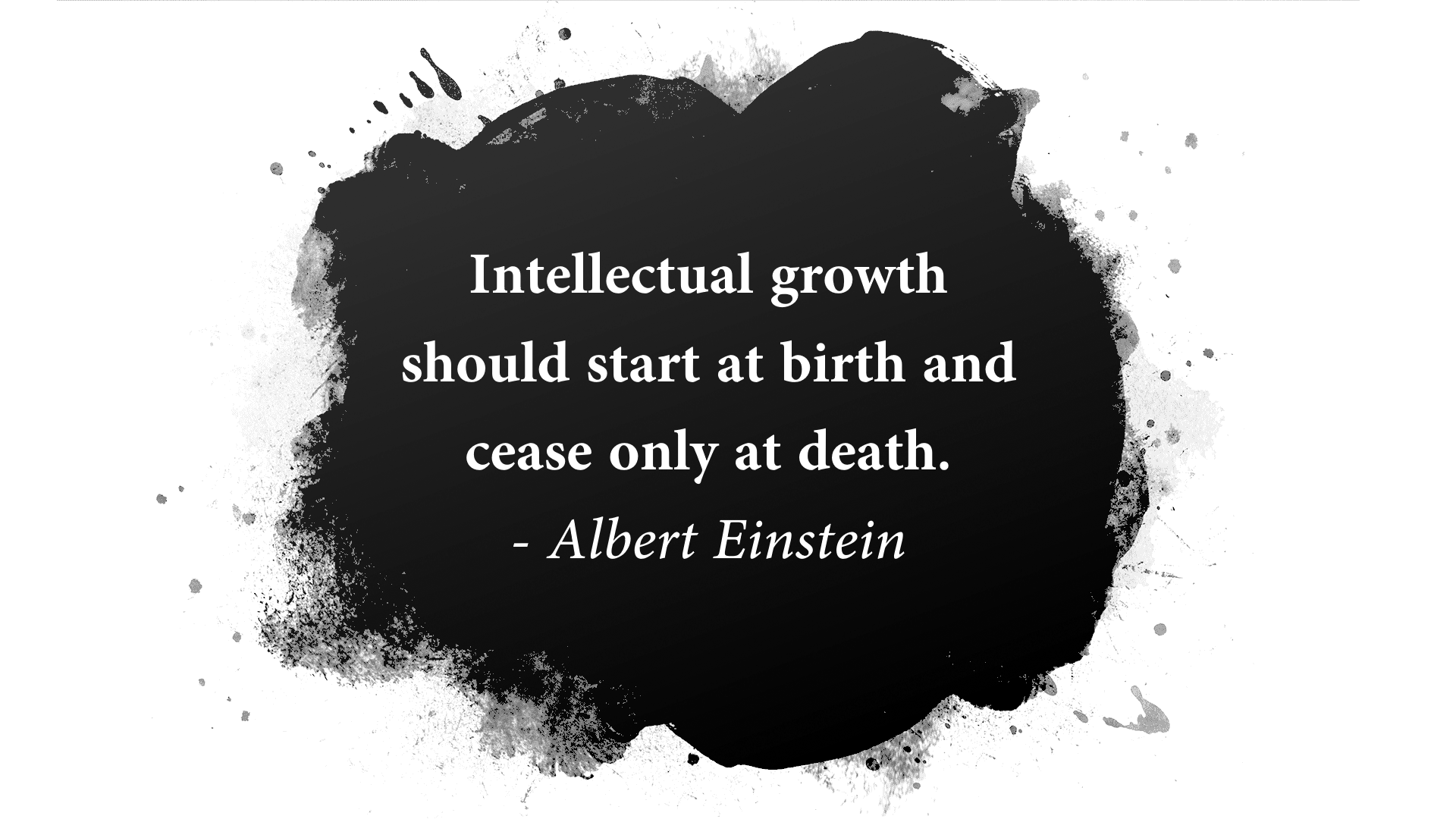
2. A blank slide
This might seem strange to some people, but a blank slide can be really powerful if you want to have your audience’s full attention. You can use the advantage of blank slides by incorporating them at the beginning, in the end or even in between your regular slides. You can either use a blank slide of your regular template (so there will still be some design elements on it) or go all in and make the slide completely black (or white).
3. A call to action
If the goal of your presentation is to really make your audience act in some kind of way, there is no better way to start – or better yet end your presentation than with a call to action. This can be literally anything from little trivial things like “Drink enough water during the presentation so your brain stays intact!” – which will lighten up the mood – to more serious calls like “Help reducing waste by recycling whenever possible!”.

4. A question
Usually, it is the audience that asks questions after a presentation. However, you can also turn that around and ask your attendees instead. However, it’s important to ask a question that can be answered easily and individually – the best questions involve previous experiences and personal opinions (asking about facts or questions that are hard to understand can often lead to silence and no one wanting to answer).
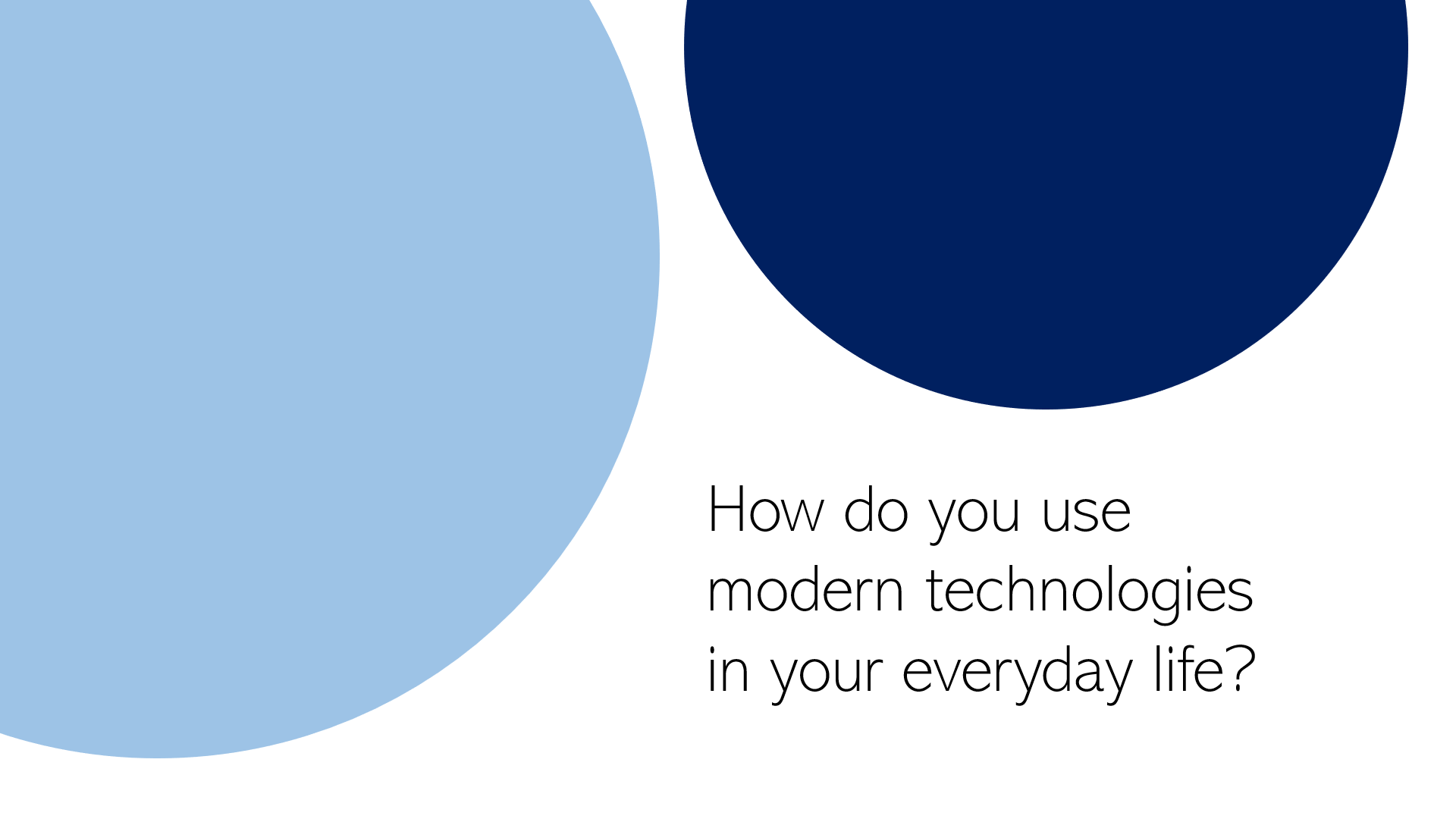
5. An interactive poll
Nothing engages the audience like a live poll. Conduct one right at the beginning to get everybody envolved, and/or wait until the end to get your audience’s opinion on something. Icebreaker polls are the perfect way to start, as they lighten the mood. You can easily create polls for free with interactive software tools such as SlideLizard .
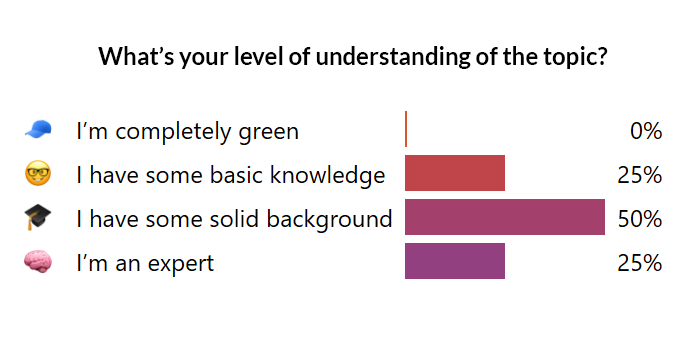
6. A funny picture, meme, or quote
I’m pretty sure that every student nowadays has that teacher that just tries a little too hard to be cool by throwing in a meme on literally every single slide. That may be a bit too much. But just a little comedy at the beginning or in the end can make you seem very charismatic and entertaining and catch the attention of your listeners. Open (or close) with a joke, a funny picture or a quote – whichever you feel comfortable with. It is usually best if it has something to do with the topic you’re presenting.

7. An interesting fact
Catch the audience’s attention by putting an interesting fact concerning the topic on one of your slides – ideally at the beginning, but maybe also in the end (to keep up the audience’s interest even after the presentation is done).
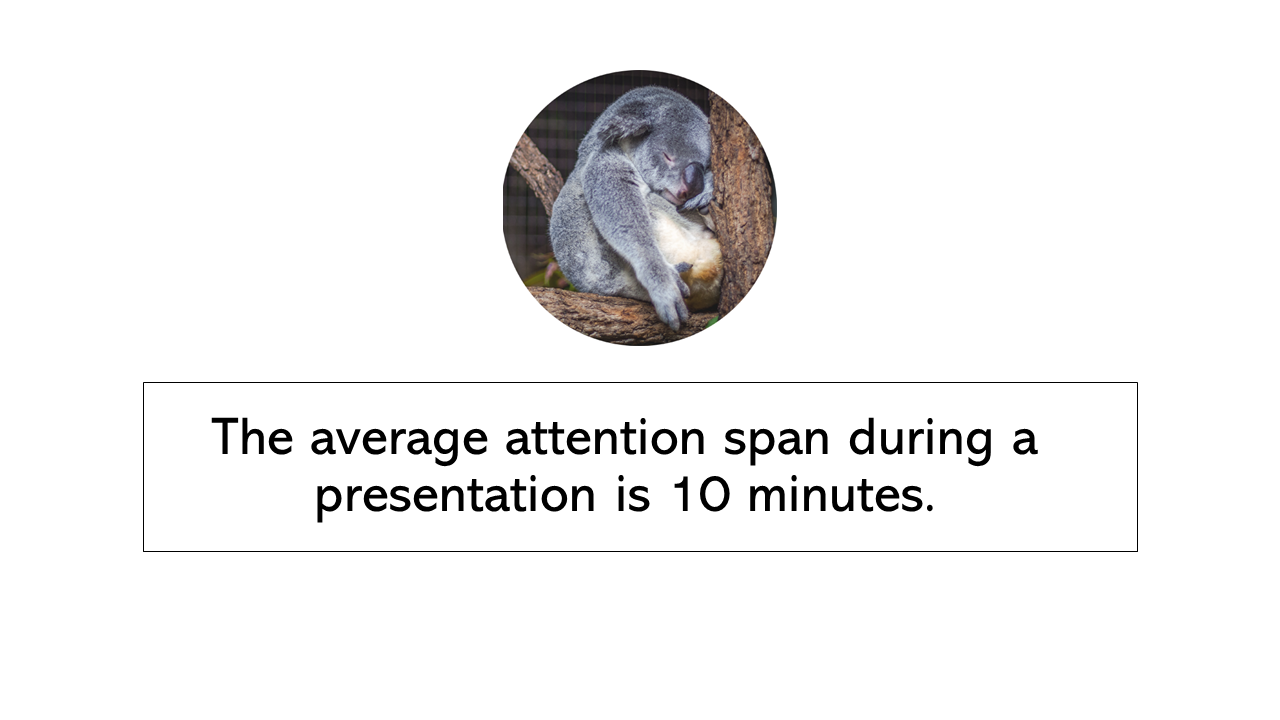
8. The title, but with a twist
If you feel like you need to put the presentations name/topic on the front slide, but still want that little creative twist, just change the title slightly. According to what I’m proposing, rather dull presentation titles like e.g. “Marine Biology – An Introduction to Organisms in the sea” can be transformed to “Marine Biology – Diving Deep” (or something less cheesy if you prefer). Make it either funny or over-the-top spectacular and catch the audience’s attention!
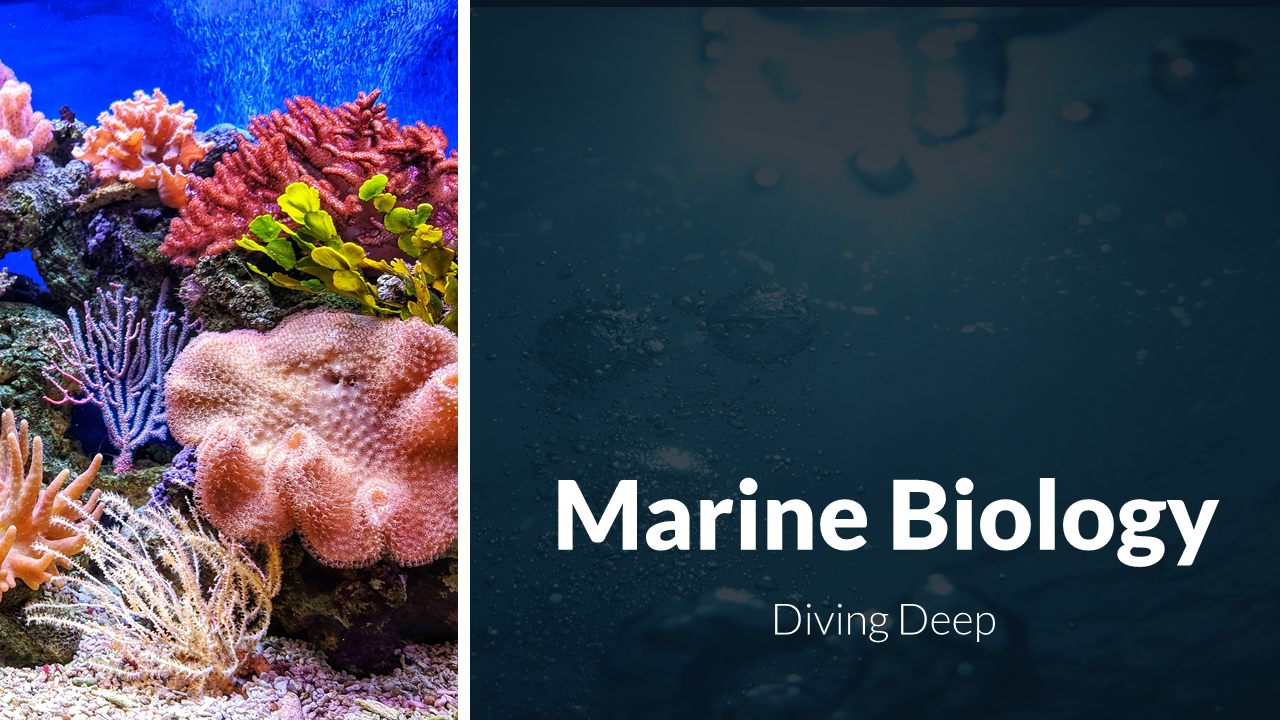
9. A bold statement, opinion, or piece of information
This is probably the best way to capture your audience from the beginning on. Start with a radical, crazy opinion or statement and then get your attendees hooked by telling them that during the presentation, they will learn why you’re right. It could be anything, really, as long as it goes well with your presented topic – from the statement “Everybody has the time to read 5 books a month” to “Going to college is a waste of time” or “The human species is not the most intelligent on earth” – Take whatever crazy, unpopular theory or opinion you have, throw it out there and (very important!) explain why you’re right. You’ll have your audience’s attention for sure and might even change some of their opinions about certain things.
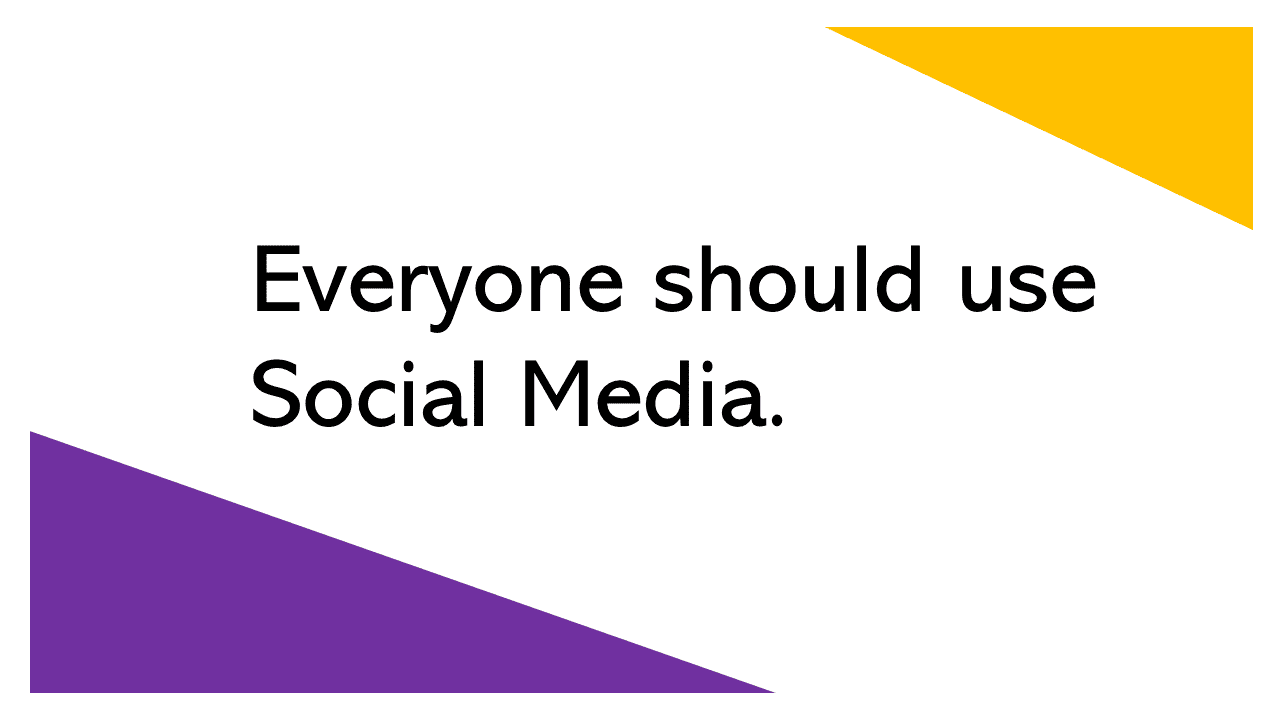
10. No title and end slide at all
Yes, that’s a possibility as well. If you absolutely can’t think of any creative or otherwise good way to start and end your presentation – even after reading the tips mentioned above – then simply don’t. That’s right - no title and end slide at all. You can pull that of by simply introducing yourself in the beginning, then getting right into the topic (which makes a good impression, long introductions are usually rather tedious) and when you’re at your last slide just saying a simple ‘Goodbye, thank you and feel free to ask questions’.
Related articles
About the author.

Pia Lehner-Mittermaier
Pia works in Marketing as a graphic designer and writer at SlideLizard. She uses her vivid imagination and creativity to produce good content.

Get 1 Month for free!
Do you want to make your presentations more interactive.
With SlideLizard you can engage your audience with live polls, questions and feedback . Directly within your PowerPoint Presentation. Learn more

Top blog articles More posts

6 Tips to turn your boring slides into stunning presentations

Microsoft Copilot: A Comprehensive Review of the AI tool

Get started with Live Polls, Q&A and slides
for your PowerPoint Presentations
The big SlideLizard presentation glossary
Visual communication.
If there are used images or videos for communication, it is visual communication. Visual Communication is almost used everywhere like on television, posts on social media (Instagram, Facebook), advertisement.
.ppt file extension
A .ppt file is a presentation which was made with PowerPoint, that includes different slides with texts, images and transition effects.
Virtual Event
Virtual events take place entirely online. They are very convenient as anyone may join from wherever they are via a smartphone or computer.
Recall Questions
With recall questions, you have to remember something or something has to be recalled. Example: A teacher asks his students a question so that they remember the material from the last lesson.
Be the first to know!
The latest SlideLizard news, articles, and resources, sent straight to your inbox.
- or follow us on -
We use cookies to personalize content and analyze traffic to our website. You can choose to accept only cookies that are necessary for the website to function or to also allow tracking cookies. For more information, please see our privacy policy .
Cookie Settings
Necessary cookies are required for the proper functioning of the website. These cookies ensure basic functionalities and security features of the website.
Analytical cookies are used to understand how visitors interact with the website. These cookies help provide information about the number of visitors, etc.
Back to all topics
- Online Marketing
- Business Hacks

17 Techniques to Craft Irresistible Titles [Free Templates!]

How to create titles?
No matter what title you want to create, it's a good idea to stick to these 6 basic rules:
- Fulfill with a promise
- Test different variants
- Use the language of benefits
- Write concisely and specifically
- Remember about SEO
- Appeal to the emotions of your audience
1. Keep your promise
2.test, test, and test again - test.
Create several versions of one title. The first thought in creating a headline may not always be the best one. A good headline needs to be analyzed. Having several variants to choose from will make it easier for you to choose the perfect one. You can also try A / B test and change the titles from time to time even after the text is published. Thanks to the statistics from analytical tools, you will find out which title brings better results. Use different techniques of persuasion and choose different keywords. See what works for your audience and what search engines like. Remember that there is no single recipe for a successful headline for every article. Choose a formula that reflects the nature of your text.
3. Use the language of benefits
Use your title to tell the users what they will gain from reading the article. Use the information gap and include interesting facts or specialist knowledge in the article. It is worth sharing your own experience - this will make your article unique. Revealing secrets in the form of a case study or a guide based on your own experience will undoubtedly be perceived by your users as valuable.
4. Write concisely and specifically
The catchy headline should be short. It's best if you can fit in 70 characters with spaces. It is also essential in terms of positioning. Search engines will not display the full title if you exceed the maximum of 600 pixels. The more extended title will be cut off and thus will lose the original message and power of persuasion.
5. Remember about SEO
The title is the perfect place to put your keywords. Choose the most important keywords that define your industry or are closely related to the article's topic. Use free keyword planning tools for this. However, remember not to overdo it with the number of keywords in the header. Otherwise, you'll get an effect keyword stuffing that looks unnatural.
BOWWE Growth Hack
Use long-tail phrases. Extended terms are more unique - with their help, you can describe the problem in detail. It can be difficult for you to break through the competition in search engine rankings with really popular single keywords.
6. Appeal to your audience's emotions.
Use language that will touch your readers' emotions. Instead of referring to the facts themselves, express your enthusiasm in words (Learn SEO basics easily - it's possible). Personalize your title and address the recipient directly, preferably you. Formal phrases can be dissuasive, while too general, impersonal phrases will lose their force in the message.
17+ proven patterns for building catchy titles
Are you struggling to create headlines that grab your readers' attention and leave them wanting more? Do you find yourself staring at a blank page, searching for inspiration and ideas?
Don’t worry because copywriting formulas are here to save the day! These powerful writing techniques have been used by copywriters and marketing gurus for years, and for a good reason. They are incredibly versatile and can be adapted to fit almost any type of content. Simply input your topic into one of these formulas, and voila - a captivating headline is born.
So, what are you waiting for? Let's dive into the world of copywriting formulas and discover the secret to crafting titles that will drive traffic to your website and keep your readers engaged.
How to create catchy headlines?
- Apply the information gap
- Create lists and tips
- Use numbers
- Start with How
- Show a faster way to achieve your goal
- Use storytelling
- Reveal a hitherto unknown secret
- Create guides and tutorials
- Keep others from making a mistake
- Show ready solutions
- Help save others time and money
- Start with Why
- Show what your content contains
- Stay updated
- Show the recipient what they should do
- Refer to others
- Use Power Words
1. Apply the information gap
Have you ever heard of the curiosity gap? It's the gap between what we know and what we can know. Whenever our mind encounters incomplete information, we experience this gap. Our natural instinct is to satisfy our curiosity and quickly fill in the missing pieces.
As a content creator, you can leverage this information gap to ignite the reader's thirst for knowledge. And the best way to do this is through a captivating title! By withholding essential details in the headline, you can create an untold story that entices readers to click and explore further. This approach works particularly well when the topic addresses the reader's personal situation and provides valuable insights.
So, how can you create an information gap with a title? Here are some examples to inspire you:
- Revealed: The Shocking Cost of Hiring a New Employee
- Is Your Profession Among the Top Gainers in Today's Job Market?
- Brace Yourself: The Unstoppable Rise in Price of Your Favorite Smartphone
- By using these tried-and-tested techniques, you can create titles that engage readers and drive traffic to your content.
Curiosity gap vs. clickbait
It's crucial to distinguish the curiosity gap from clickbait. Unlike clickbait, which manipulates readers' emotions and lures them into clicking a title by making false promises, the curiosity gap technique piques readers' interest without misleading them.
Clickbait often leaves readers disappointed as the article fails to deliver the promised value. Such poor quality content can trigger readers' fury, and this tactic is frequently employed by gossip websites to increase clicks.
2. Create lists, guides, and tips
One of the most effective ways to write an engaging article is to transform it into a list of practical tips, inspirations, or a checklist.
By dividing the content into easy-to-follow steps or sub-items, you can create a specific hierarchy that organizes the text and makes it easier to read. This approach not only makes the content clear and understandable for the reader but also makes it easier for you to write.
Furthermore, listed texts tend to go viral and increase the chances that readers will choose this type of article. This is because they provide a guarantee that the reader will find specific information in the article rather than having to sift through a massive amount of text.
Additionally, listed texts allow readers to quickly scan the article during a short break at work and find the most exciting information.
3. Use numbers
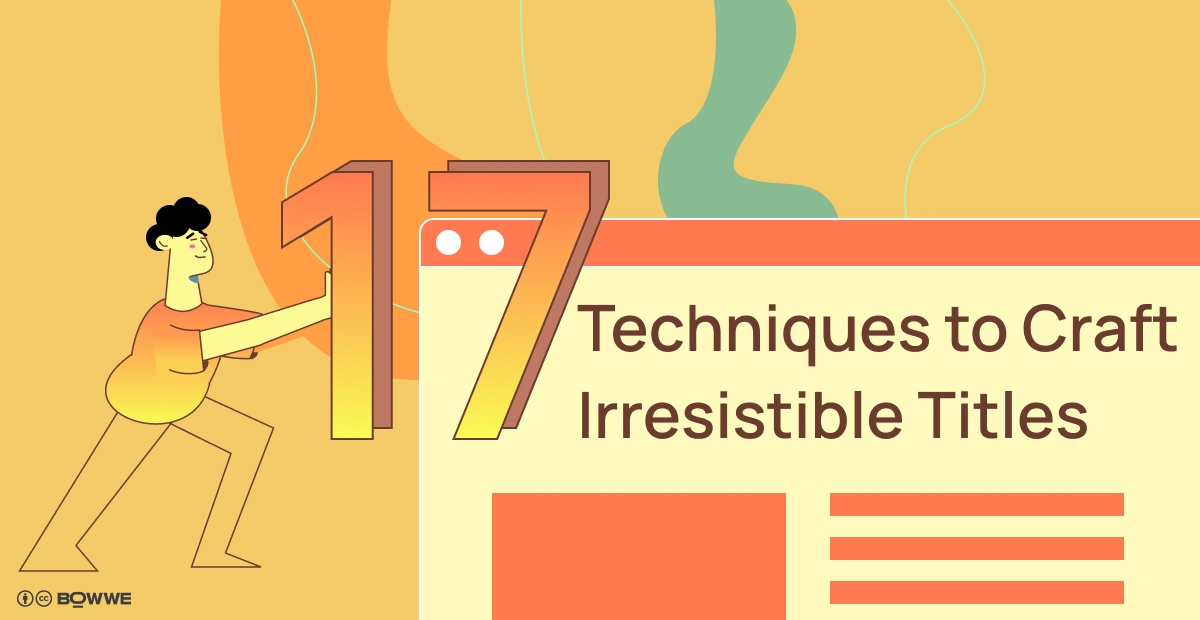
Looking to attract more eyeballs to your content? Consider using numbers in your title - they're a proven tactic that can draw in readers with their numerical structure. By starting your title with a number, you can make it stand out from the crowd of letter-based titles out there.
For maximum impact, try using odd numbers - they're more attention-grabbing than even ones. Instead of the tired and true "5" or "10" ways to do something, go for something like "7 secrets to skyrocket your website traffic".
Need some inspiration? Here are a few examples of compelling number-based titles:
- 6 must-visit destinations in Italy that will leave you breathless
- 8 steps to building the perfect website, even if you're not a tech expert
- 11 creative ideas for writing articles that readers can't resist
4. Start with the How
When searching for information, people typically use the word "How" to formulate their queries. By incorporating this word into your title, you can pique the reader's interest and guarantee the popularity of your content.
If your article is a tutorial or you're sharing your experience, starting your title with "How" suggests that your text contains the answer to a specific question. The beauty of this technique lies in its directness, as the reader expects a clear and concise solution. However, it's important to deliver on your promise and provide the reader with the answer they're seeking.
Consider these examples:
- How to Effectively Stay in Shape After Losing Weight
- How to Create Engaging Blog Content When You're Not an Expert
- How to Earn Your First Blogging Income
But don't limit yourself to just "How" questions. You can also turn your title into any other thought-provoking question, like:
- At What Age is it Best to Launch Your Own Business?
- Should You Combine Work and Passion for More Income?
- What Are the Traits of the Best Project Managers?
5. A faster way to achieve a goal
As humans, we crave fast and impressive results with minimal effort, and this holds true for online content as well. To captivate your audience and encourage them to take action, it's crucial to provide them with intelligent solutions, tutorials, or beginner's guides that can expedite their progress. Crafting titles that offer shortcuts is an effective way to do this, and here are some proven examples:
- Start Your Own Blog in Just a Month
- Increase Your Earnings with Only 5 Hours of Work Daily
- Master Coding by Practicing for Just an Hour a Day
6. Storytelling
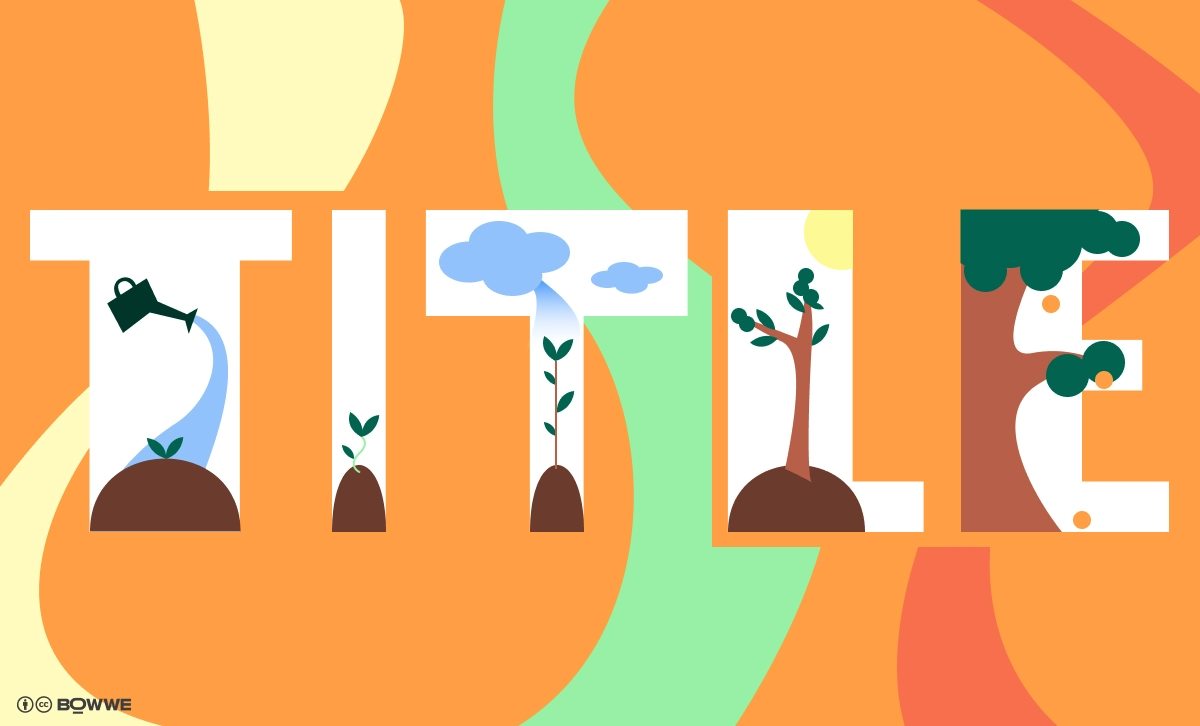
There's nothing that resonates more with readers than authenticity. And what better way to achieve that than by telling a captivating story or sharing a personal experience?
Incorporating storytelling into your content can work wonders, whether you're writing an article or a case study. To create an effective title, try using this formula: "How did we get there" or "How I did it."
Check out these examples to get an idea of what we're talking about:
- "Here's How We Developed an App Prototype in Just 3 Weeks"
- "How I Transformed My Qualifications and Became a Programmer at 50"
- "From a Garage Computer to the Most Valuable Company in the World: The Story of Apple"
If you want to boost your traffic to the next level, consider using these proven techniques to create captivating titles.
7. Reveal an unknown secret
Unlock exclusive knowledge and make your readers feel special with these proven techniques. Everyone loves a good mystery, and by sharing insider secrets from successful companies, such as cracking the Google algorithm for more effective positioning, you'll keep your readers hooked.
- "7 Sins No Manager Will Confess"
- "Biggest Corruption Scandals in History"
- "How to Write an Article to Alienate Everyone? The Biggest Mistakes of Copywriters"
These attention-grabbing titles will help you achieve the highest traffic and keep your readers coming back for more.
8. Create guides, tutorials
One effective way to create engaging titles is to provide clear and helpful instructions on how to do or use something. Guides can take many forms, including articles, videos, or infographics, and can establish you as an expert in your field. Updating them is also a breeze, as you can simply add new threads to keep them fresh and relevant.
- Ahrefs' Mega Guide: Effective Competition Analysis
- The Indispensable Guide to Uploading Your First YouTube Video
- Whip Up Your First Course in Just 15 Minutes with This Simple Mixer Instruction Manual
Another effective approach is to use the "How..." formula to offer a ready solution to users' problems. For instance:
- How to Create a Portfolio Even Without Much Experience: A Step-by-Step Guide
- How to Start Coding from Scratch: A Comprehensive Tutorial
With these tips and tricks, you'll be well on your way to crafting irresistible titles that will drive traffic to your site and establish your authority in your niche.
9. Protect others from making a mistake
Making mistakes can be costly, which is why we all want to learn from those who have more experience. Be the wise mentor for your audience by sharing your knowledge and advising them on what to avoid. By imparting your expertise, you can help them achieve their highest traffic goals.
Some title examples to inspire you:
- Don't make these 9 common copywriting mistakes – learn from the pros
- Wedding planning disasters: Top mistakes to avoid at all costs!
- How to outsmart hackers: Tips and tricks to keep your website safe
10. Show solutions
It's important to remember that your title should offer value to your readers. By providing them with advice that can simplify their lives or save them time, you're more likely to capture their attention. Make sure to highlight the specific benefits that your solution can provide, such as a six-pack in six weeks or getting rid of greasy stains in just four steps.
Another key factor in crafting an irresistible title is to make it sound achievable. People love shortcuts, so if you can promise success with minimal effort, you'll instantly pique their interest. Just be careful not to over-promise or suggest something that's impossible to achieve in a short amount of time.
- The Ultimate Guide to Achieving a Six-Pack in Just Six Weeks!
- Say Goodbye to Greasy Stains: Four Proven Ways to Keep Your Clothes Looking Fresh
11. Save others time and money
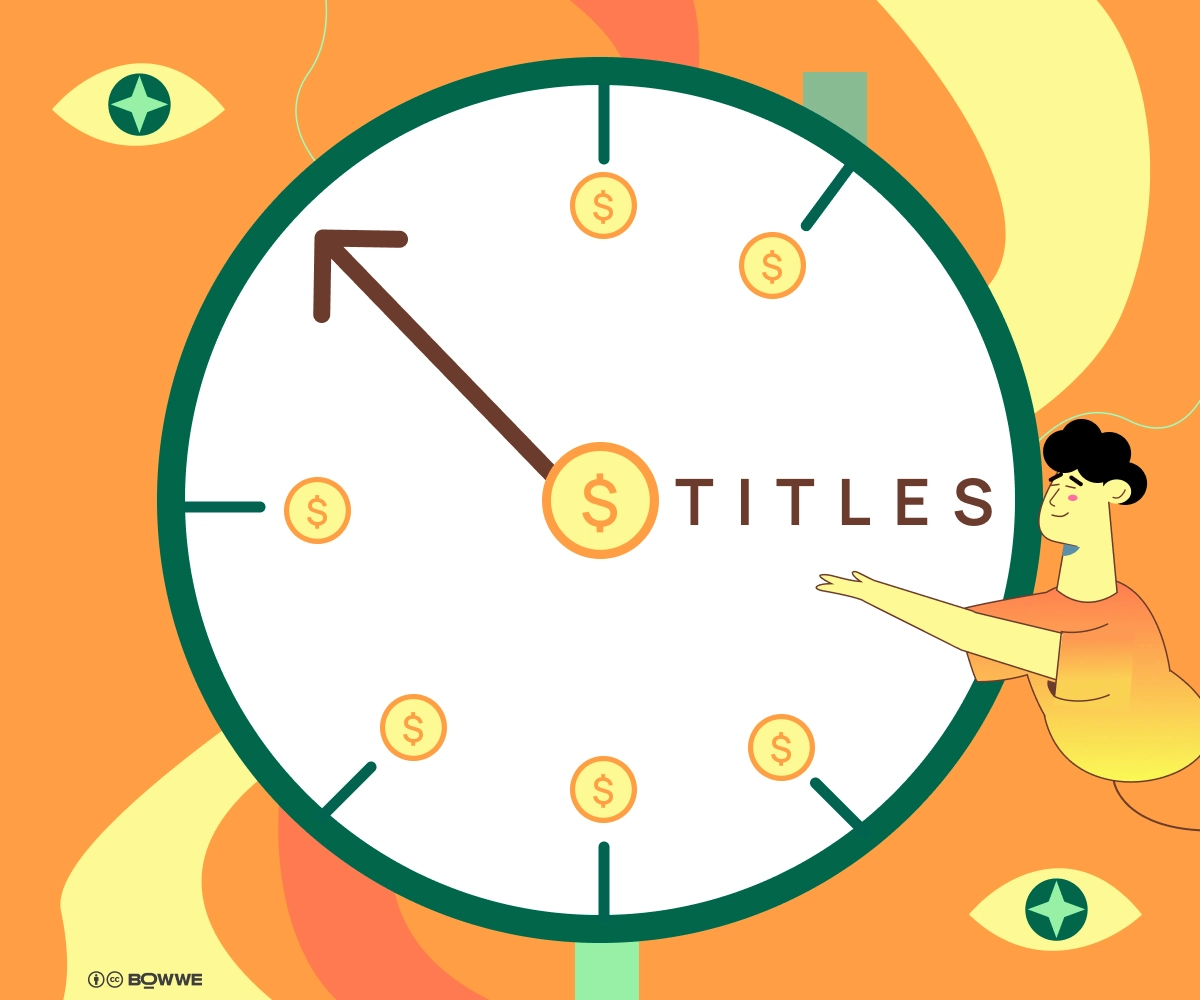
In the world of product and solution options, there's always room for improvement. It's crucial to present your audience with the most advantageous alternatives to save their time and money. It's time to show them that they're not stuck with just one solution. Adding descriptive adjectives like "free," "fast," and "cheap" can help attract them even more.
Check out these captivating titles that will surely attract your audience and increase your traffic:
- Unleash your creativity with a free Photoshop alternative!
- Don't have the budget for a social media specialist? Discover practical content tweaking tools!
- Are influencers' favorite powders too pricey? Try this cheap and effective alternative!
12. Start with Why
Give your recipient a question that accurately reflects their doubts and answer them satisfactorily way. This solution also gives a chance to appear in recommended fragments (features snippets) from Google.
Recommended fragments (featured snippets)
These are fragments of the website that correspond in the best way (according to Google) to the entered query in the search engine. They should not be confused with paid advertising. Google selects the fragments that best fit the query itself. They can be in the form of a list, answer to a question, instructions, etc.

Search for a phrase "featured snippets"
To write a captivating title that attracts maximum traffic, it's important to pose a question that reflects the reader's doubts and provides a satisfactory answer. Here are some examples of attention-grabbing titles that utilize this technique:
- Why is the grass green? Unveiling the Science Behind Nature's Color Palette
- Why should you take out health insurance even if you have never been seriously ill? Exploring the Importance of Preemptive Health Measures
- Why is it worth saving money? List of the most important benefits that you never thought of
Alternatively, you can use similar word combinations to pose intriguing questions in your title. Here are some more examples:
- What are the top secrets of successful entrepreneurs? Lessons from the World's Top Business Leaders
- How to create an SEO strategy that will skyrocket your website's ranking? A Step-by-Step Guide to Mastering SEO
- Where can you find the best travel deals in 2023? Insider Tips for Budget-Friendly Travel
13. Show what your content contains
When it comes to writing captivating titles, there are plenty of proven techniques that can help you stand out in the crowded online space. One such technique is to highlight unique elements of your content, such as an interview or a photo gallery, in the title itself.
Another effective strategy is to promote additional resources or content, such as downloadable PDFs, right in the title.
By doing so, you'll be able to entice readers with valuable information and resources, increasing your chances of driving more traffic to your site.
Check out these examples of captivating titles that utilize these proven techniques:
- "How to Slash Your Daily Calorie Intake: Our Expert Tips and Tricks [+ Table]"
- "Discover the Hottest Reads of the Year: Vote in Our TOP 10 Books Poll"
- "Exclusive Behind-the-Scenes Look: Our Photo Report from the 2023 Oscars"
Incorporate an intriguing quote from an interview or conversation. By doing so, you'll grab your audience's attention and pique their curiosity.
Need some inspiration? Check out these examples:
- "I've always felt this was the right way." - Katy Perry reveals her secrets to success
- Expert opinion: "Social Media is bad for children's mental health" - What you need to know
- James Oliver on the growing popularity of Asian cuisine: "It should have happened a long time ago"
Remember to choose quotes wisely - they should be concise and add value to the title. With this technique, you'll be one step closer to achieving your highest traffic yet!
15. Stay informed
Add the current year to your title when creating tutorials, guides, or summaries. This not only adds a sense of urgency but also signals to your readers that the information is fresh and relevant.
Check out these examples of captivating titles that use this technique:
- Ahrefs Competitor Analysis: The Ultimate Guide (2023 Edition)
- What's On: The Top Events in Warsaw for June and July 2023
- Fashion Forecast: The 10 Trends That Will Dominate in 2023
By incorporating this easy hack, you'll be on your way to creating titles that grab attention, pique curiosity, and drive traffic to your content.
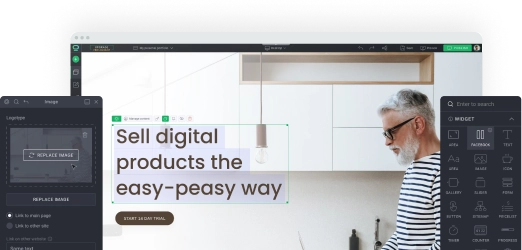
Here are some examples of captivating titles that follow these principles:
- Say Goodbye to Sleepless Nights: 17+ Proven Ways to Beat Insomnia
- Boost Your Website Traffic Today: Start Your Mailing Campaign with These Simple Steps
- Upgrade Your Style Game: Discover the 10 Upcoming Fashion Trends You Need to Know
17. Cite others
One strategy that works wonders is showcasing real-world success stories. By including the names of well-known figures in your niche, you can instantly boost your credibility and establish trust with your readers. Check out these examples:
- Here's how Warren Buffet made a fortune. You also can!
- Learn to sing like Beyonce! Just follow these simple rules!
But be careful not to choose famous names just for the sake of it - make sure they are truly relevant to your content and audience.
18. Use Power Words

Utilizing power words not only in your title but also throughout your content is a quick and effective way to encourage your audience to read on. However, it's essential to use these power words wisely, as not all of them will fit your niche. You can even include several power words in one title to make it even more compelling!
Here are some examples of winning titles that utilize power words:
- Discover the Ultimate Secrets to Boost Your SEO Rankings Today!
- Unleash the Untold Benefits of Social Media Marketing for Your Business
- Ignite Your Entrepreneurial Spirit with These Simple Yet Effective Strategies
- Unlock the Hidden Potential of Your E-commerce Business with These Proven Tips
Power Words
These words have the ability to stir up a range of emotions in your audience, encouraging them to take action. Categorized by feelings and moods such as greed, curiosity, laziness, lust, vanity, trust, anger, and fear, incorporating powerful words in your title can be the key to increasing engagement and conversion rates.
How to apply knowledge in practice? Check out our heading ideas!

The forms of headlines vary depending on what content they present and where they are located. They will look different in a gossip newspaper than in articles for a company blog. Therefore, always remember to adapt them to the subject of your content and your audience. Below is an example of a list of headings. Find out which category suits you best.
Shortlist of titles:
1. Titles for the website
2. Article titles
3. Blog titles
4. Newsletter titles
5. Headlines for newspapers
6. Fun titles
7. Emotional titles
8. Creative titles
9. Unique titles
10. Clever titles
11. The best titles
Website title
Website headings are an essential part of its positioning in search engines. They help organize the content and navigate through the users' side. An attractive and good headline will attract the audience and encourage them to review what the website offers. To create the proper headline for a website, SEO principles cannot be ignored. You have to remember especially about:
- Appropriate length - the title should not exceed 70 characters with spaces.
- Keywords (including those from the long tail category)
- Power Words - words that evoke emotions and encourage action
Website title example:
- Are you here for the first time? Meet BOWWE and see how to create your website without coding.
- See all configurations of our products! Choose the perfect one for you!
Article titles
Contrary to appearances, the most crucial part of an article is not its content but its title. As already mentioned, people decide to read an article based on its headline alone. This means that you actually have a few seconds and a maximum of two lines of text to attract the recipient and encourage him to read at least the introduction to your article.
Journal title ideas:
→ 8 featured free photo manipulation apps
→ What do you know about the bird world? 7 Shocking Facts You Didn't Know About
Blog titles
These types of titles are usually made of ready-made and well-known copywriting formulas. Just browse through two or three blogs to understand what they're all about. They are built according to SEO principles, matching the keywords entered in the search engine. Some of the best-known formulas for such headlines include: How…, Top [Number]…, Why… etc.
Examples of blog titles:
→ 13 ways to have a successful and romantic wedding
→ Greek salad recipe? Make her 10 minutes!
A newsletter titles
The newsletter is another form of gaining new audiences and keeping your current audience. That is why it is worth taking the time to refine each email sent as part of it. In this case, the headline is a vital element, if not the most important one. When you receive an email, you first see its title and decide whether to open it or throw it into the trash. So the title must contain attention-grabbing words that will grab your recipient's attention and convince them that it is worth reading the rest of the message.
It's also worth trying out personalized titles and using the recipient's name or recent actions on the website. Thanks to this, e-mail recipients will feel honored. You will also establish a closer relationship with them and show that you care for them.
Examples of newsletter titles:
→ Rafal, a historical moment has come and we want you to experience it with us!
→ Ania, we have something special for you. Do you want to find out?
→ A beautiful candle set for your freshly purchased table. See more proposals.
Magazine headlines
Press titles can be controversial and very sensational. This is mainly seen in gossip newspapers. The headlines are flashy, and sometimes they do not fully reflect the content they present. However, as with online titles, they must compete for the attention of the recipient. To this end, they are full of words that evoke strong emotions and contain multifunctional signs such as exclamation and question marks. They may also include excerpts from statements, e.g. from interviews.
An example of titles for magazines or newspapers:
→ Scandal! The famous singer left her dog in a hot car (Photos)
→ Only with us: Backstage of the Oscars. Watch the interview with the winners!
Funny titles
This type of headline is usually found on entertainment sites. These can be the headings of, for example, columns or movie reviews. They are supposed to amuse the recipient and convey that the rest of the content they advertise will also be equally entertaining. Fun titles can also be used on company blogs as long as they fit the way the brand itself communicates.
Examples of funny titles:
→ Very strange (but hellishly effective) ways to avoid responsibilities
→ How to quit your job in 7 steps. Instructions for the desperate!
Emotional and cute titles
You will see them most often in content that is intended for younger audiences or in content that is romantic. Children's titles need to be friendly, fun and arouse their curiosity. In the case of older recipients, they evoke strong emotions, such as emotion or delight. These are ideal for real-life stories about love or family.
Emotional and cute titles ideas:
→ Sweetness itself! Watch the latest video of cute pandas from the Korean Zoo
→ It was love at first sight. Learn the romantic history of this retired couple with 60 years of service
Creative titles
They can be found in entertainment and cultural content. In their case, they don’t always clearly indicate what, for example, a given article is about. They often contain play on words and all kinds of appeal. They are supposed to intrigue the audience and arouse their curiosity.
Examples of creative titles:
→ Water your floral business! Check out these 5 floral arrangements and get inspired
→ I promise I am combining something wrong! So I review all 7 parts of Harry Potter
Unique title
Those are impressive titles that are remarkable. They can surprise and be somewhat controversial. Their unique character intrigues viewers and promises them unique content that will not bore them. They belong to cool titles that perfectly catch the attention of the recipient.
Examples of unique titles:
→ 7 stupid things you need to do at least once in your lifetime
→ I quit social media ... and you must too!
Clever headlines
That is, titles that are often a contradiction of typical copywriting headlines. They attract recipients with their unconventional nature. They show it through a play on words or various types of references. These headlines can be risky as they don't always clear what the rest of the content they describe is about.
Examples of clever headlines:
→ Still, pouring boiling water over your tea? Stop! Now it's done like this ...
→ If you don't read this article today, you'll regret it! Don't lose this chance
What does a good headline look like?
First of all, it must accurately reflect the problem of the audience. It is supposed to evoke emotions and encourage you to read the rest of the content presented by it. It should be consistent with SEO principles ( contain keywords , Power words , and appropriate length etc.).
Here is a list of ready-made formulas for really good headlines that are effective and proven:
→ What to do when ...
→ Top [number] ...
→ Best ways to ...
→ ... Step by step tutorial
→ [product, brand etc.] vs. [product, brand, etc.]. Comparison…
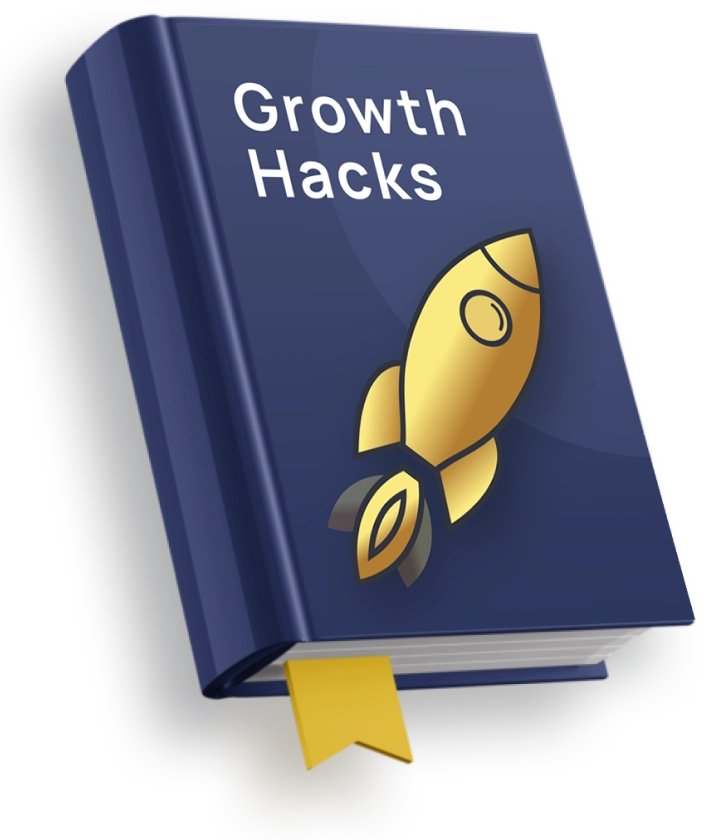
A good title can bring you closer to your goal, no matter what you do! You already know the appropriate copywriting formulas. Thanks to them, you will be able to create an exciting headline for any content and gain experience in the skillful use of advertising language without much effort.
What now? Choose the formula that best suits your content and start experimenting! Develop some title ideas. Then test them and watch the changes on your website. This way, you will find the perfect headline - which will give you colossal clickthrough rates!
Catchy titles - FAQ
What are catchy titles.
Catchy titles are titles that effectively capture the reader's attention and intrigue them enough to want to read further. They often use humor, wordplay, or emotive language to create a sense of curiosity or excitement.
How do you write a catchy title?
What are some catchy headlines.
Here are a few examples of catchy headlines:
- "10 Surprising Ways to Boost Your Website Traffic"
- "The Ultimate Guide to Social Media Marketing for Beginners"
- "How to Write a Killer Blog Post in Less Than 30 Minutes"
- "5 Simple Hacks to Double Your Email Open Rates"
- "Why Your Business Needs a Strong Online Presence Now More Than Ever"
How do you write a clever headline to attract more attention?

- Build Your Website
How to Create a Spa Website That Soothes and Sells?
x600.webp)
From Good to Great: 13 Hotel Management Strategies That Deliver Results

- Social Media
28 Top Real Estate Marketing Ideas (The Only Ones That Matter)
Get started with bowwe.
START CREATING
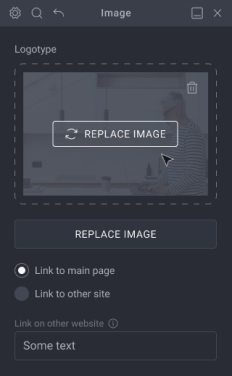
< Go back to Login
Forgot Password
Please enter your registered email ID. You will receive an email message with instructions on how to reset your password.

How To Create A Captivating Title Slide For A Presentation
Are you looking for a way to ditch the boring title slide and hook your audience from the start? This blog will teach you all you need to know to nail your first impression. We’ll break down the key ingredients for a captivating PowerPoint title slide, right from must-have elements to the art of titling with PowerPoint. Plus, you’ll get a step-by-step guide on how to create a title slide that will set the stage for a killer presentation.
When designing your PowerPoint presentation, there is no doubt that the most crucial slide is the one at the beginning of your presentation. A well-designed title slide can amp up your presentation game and instantly grab your audience’s attention.
What Is A Title Slide?
As the name suggests, a title slide is the first slide of a PowerPoint presentation. Usually, a title slide’s content is the presentation’s title and subtitles.
What Is The Purpose Of A Title Slide?
A title slide for a presentation has to be interesting to stand out, and one has to be very cautious while making a title slide. If you make it dull, you will lose your audience’s attention within minutes. An excellent first slide is not only a reflection of professionalism but also a great way of triggering that much-needed initial interest.
What Should Be Included In The Title Slide?
A title slide contains:
- the title of the presentation.
- a preface of a presentation, at times.
- author’s name.
- a background relevant to the topic of the presentation, at times.
- the branding of the company
How To Create A Title Slide For Presentation
Based on the device or platform you’re using PowerPoint on, you can pick from three different methods to create a presentation title slide in PowerPoint.
Method 1: Choosing A Template From The PowerPoint Library For Creating A Title Slide
Step 1: To create a title slide, open the PowerPoint presentation application and click on ‘New.’
Step 2: You will find many PowerPoint templates; double-click on the template you like and click on ‘Create.’
Step 3: The template you chose will appear. Now, the template will already have a title slide design.
Step 4: Click on the title and edit it according to your needs.
Step 5: Select the title and edit its font style, color, thickness, etc. You can customize the title, keeping in mind the background color or image of the slide.
Step 6: You can play around with the title slide’s image by cropping or adjusting it to meet your presentation style requirement.
Step 7: If you don’t like the background image, you can even delete it and adjust it according to your liking by clicking on the ‘Design’ tab and then on ‘Formate Background.’
Step 8: Tip: A plain title slide looks boring; therefore, add animations by clicking on ‘Animations’ on the file menu bar. Select the title and choose any animation.
And voila! Your title slide is ready. Make sure to play around with more tools and options to find out more features you can do to make it more attractive and presentable.
Method 2: Create A Title Slide Design Using The ‘Layout’ Option
Step 1: Open a blank presentation in your PowerPoint application and select the slide you wish to convert to a title slide.
Step 2: Click Home > Layout. Select Title Slide for a standalone title page or select Title and Content for a slide that contains a title and a full slide text box.
Step 3: Select the Click to add title text box. Enter your title for that slide.
As the previous method shows, you can similarly play around with Powerpoint animations, fonts, and colors to make it more aesthetic.
Method 3: Create A Title Slide Using Slideuplift’s PowerPoint Add-In
Slideuplift provides a plethora of templates that can assist you in making a title slide. These templates are accessible through their PowerPoint Plugin.
Follow the steps given below to make a title slide using Slideuplift PowerPoint Add-In.
Step 1: Open the slide which you want to edit.
Step 2: Go to ‘Insert,’ then click on ‘Get Add-Ins.’
Step 3: In the search bar, type ‘Slideuplift’ and click on Search.
Step 4: Click on the ‘Add’ button next to SlideUpLift, then click on ‘Continue.’
And you are done! Just type cover slides on the search console and get various PowerPoint title slides for your presentation. You can choose the one you like and make edits.
How To Title A Slide In PowerPoint
Writing a catchy title is very important. A catchy title triggers the viewers’ interest and shows that you have made some effort to make the presentation.
A title also sets the tone for a presentation; for instance, a business presentation title slide and a title slide for informal events will have a formal tone and a casual or neutral tone.
The following tips can help you write catchy presentation titles.
- Make it easy to understand.
- The title should be directly related to the presentation.
- Add an element of emotion to the title (keep it neutral during formal meetings and try to add humor if the occasion allows)
- Match other elements of the title slide, like background image, font, etc, with the title.
- Keep it concise and to the point.
Having a beautiful and functional PowerPoint title page is very important if you want to catch the attention of the viewer. A bland title page is not only boring but also shows your lack of effort, which can be a deal breaker. At the same time, keep the presentation cover page minimalistic, and only use animations and effects that add value and look interesting.
Creating the perfect title slide sure does take a lot of time and effort. We at SlideUpLift have curated a collection of PowerPoint title slides that can be used as a starting point for your presentation. These PowerPoint title slide ideas are 100% customizable and can be used on both PowerPoint and Google Slides.
It’s time to buckle up for your next presentation now that you know how to create an interesting title slide.
What Is A Good Title For A Presentation?
A good presentation title is short (under 15 words). It teases the benefit for the audience, which is what they’ll learn. Use a question, surprising fact, or statement that intrigues the audience.
How Do You Title A Presentation Slide?
Based on which device or platform you’re using PowerPoint on, you can title a presentation slide using:
- The accessibility ribbon
- The layout option
- The outline view
Can I Add a Title To Multiple Slides At Once?
Although there isn’t a way to add the same title to multiple slides, you can use these workarounds to add a title slide to all your slides at once:
- Go to Slide > Edit theme. Add your title as word art to the theme. This way, it will show up on every slide in that presentation.
- You could also try creating your first slide and duplicating it to create the remaining slides. This way, you’ll skip typing in the title each time.
What Do You Say In The Title Slide Of A Presentation?
Your title slide PowerPoint should include a short, catchy title (benefit-focused!), your name for credibility (optional), and maybe the date/location for handouts (skip it on the slide itself).
Where Is The Layout Of The Title Slide Present In Powerpoint?
The layout of the title slide is present under the ‘home’ tab. You can change the title slide’s layout with the help of this tool.
Table Of Content
Related presentations.
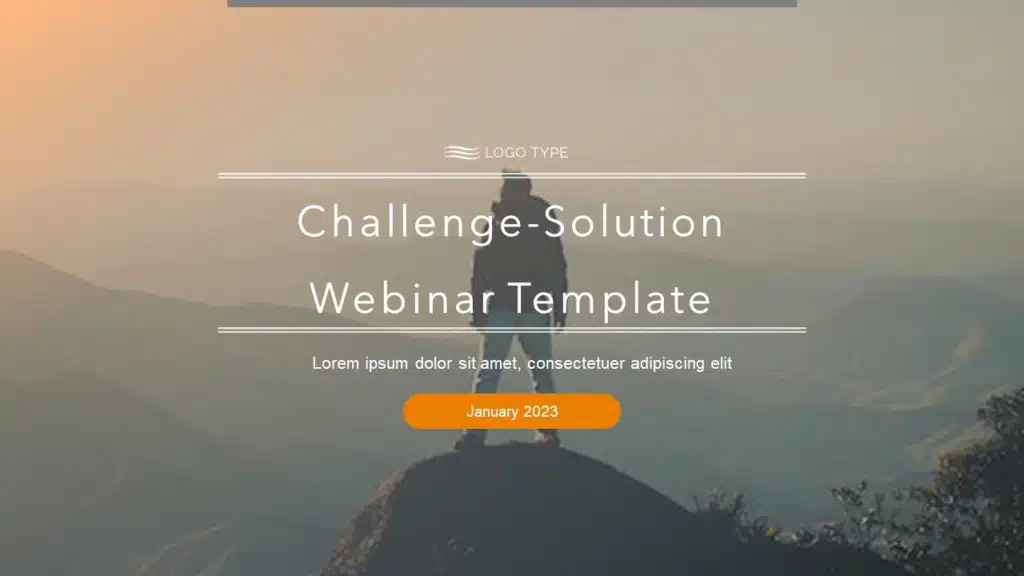
Title Slides Collection
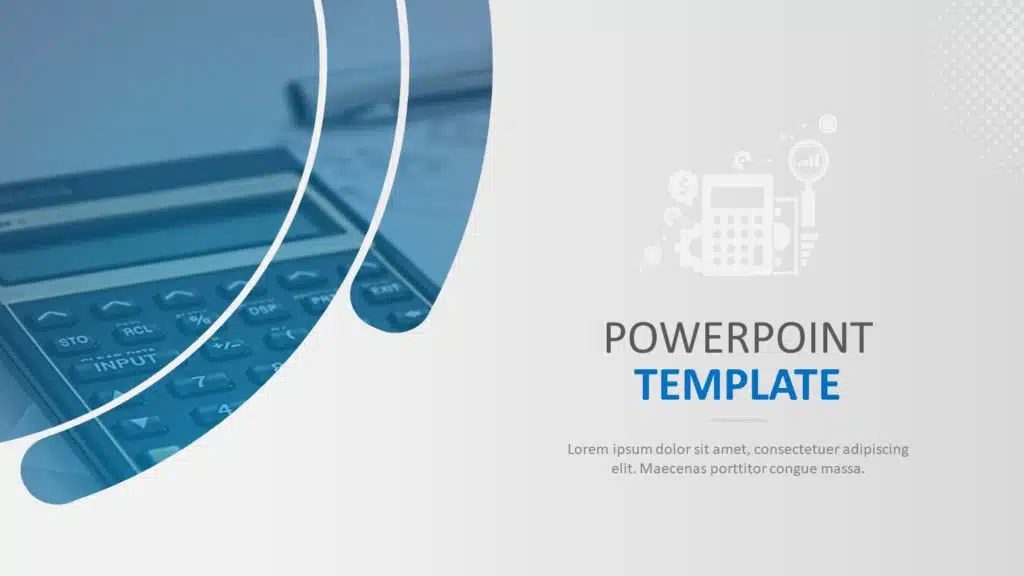
Cover Slides Colection
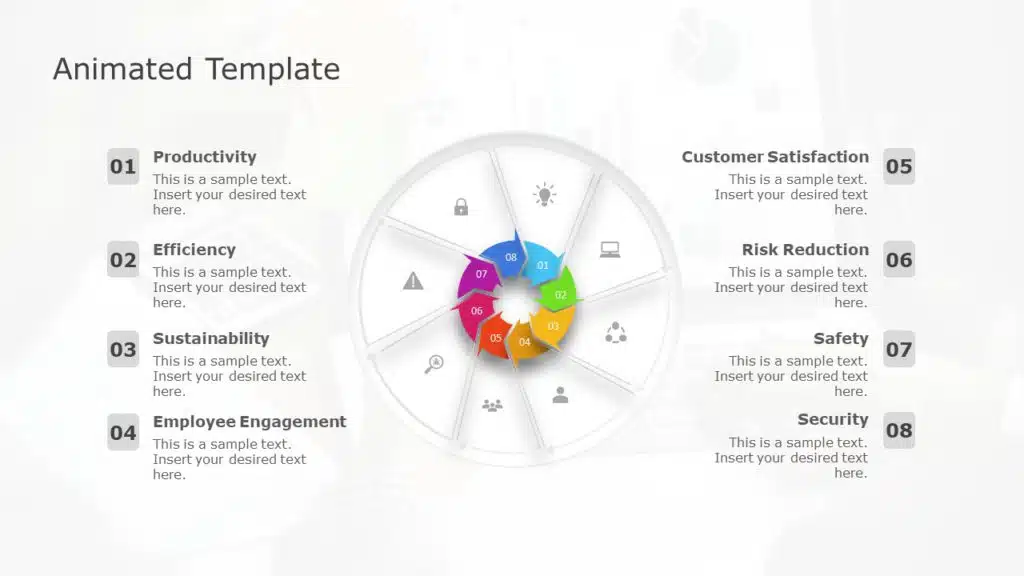
Animated Presentation Templates
Related posts from the same category.

15 May, 2023 | SlideUpLift
How To Add Slide Numbers To PowerPoint
Adding slide numbers to PowerPoint presentations is an important aspect of creating effective presentations. Slide numbers not only help you organize your presentation but also allow your audience to follow

16 May, 2023 | SlideUpLift
How To Move A Slide In PowerPoint
PowerPoint is an excellent presentation software that helps you create eye-catching yet informative slideshows. Whether you are making a business presentation or a school project, knowing how to move a

22 May, 2023 | SlideUpLift
How to Add a New Slide in PowerPoint
PowerPoint is a powerful tool that allows users to create engaging and dynamic slideshows for various purposes. Adding new slides to a PowerPoint presentation is a fundamental skill that is

3 May, 2024 | SlideUpLift
How To Delete A Slide In PowerPoint? [1-Minute Guide]
Whether you are giving a presentation at work, school, or to friends and family, ensuring it is polished and professional is crucial. Figuring out how to delete a slide in

How To Copy And Paste a Slide In PowerPoint
When making presentations, you can save time and effort by simply copying and pasting a slide into PowerPoint. The duplicate slide option in PowerPoint is useful to eliminate the two-step

31 May, 2023 | SlideUpLift
How to Hide And Unhide A Slide In PowerPoint
If you've ever used PowerPoint to create a presentation, you are aware that one of the reasons for its popularity is the program's extensive selection of options. There will inevitably

7 Dec, 2022 | SlideUpLift
How To Create Neumorphic PowerPoint Presentation To Dazzle Your Audience?
Neumorphic designs are a relatively recent design style that was first used in the User Interface design of gadgets in the previous decade. The perfect and straightforward design is unexpectedly

25 Jan, 2018 | SlideUpLift
PowerPoint Hack: How To Create Sections In PowerPoint And How To Zoom In PowerPoint
This PowerPoint tutorial is about How To Create Sections In PowerPoint. Imagine that you are about to begin your business presentation to a room full of clients, and you remember

26 Sep, 2022 | SlideUpLift
Learn How To Create A PowerPoint Template To Build Engaging Presentations
If you use PowerPoint often to make professional presentations, you probably have realized that PowerPoint Library doesn’t have sufficient PowerPoint templates available for all types of presentation needs. As it

26 Mar, 2024 | SlideUpLift
How To Create An Org Chart In PowerPoint?
Have you ever needed help explaining the intricacies of your company or project's structure to an investor, management, or employees? Whatever the case, creating an org chart can be a
Related Tags And Categories
Forgot Password?
Privacy Overview
Necessary cookies are absolutely essential for the website to function properly. This category only includes cookies that ensures basic functionalities and security features of the website. These cookies do not store any personal information
Any cookies that may not be particularly necessary for the website to function and is used specifically to collect user personal data via ads, other embedded contents are termed as non-necessary cookies. It is mandatory to procure user consent prior to running these cookies on your website.
- Sep 5, 2023
How to write an attention-grabbing title for a scientific poster

Scientific poster sessions are the best opportunity to be introduced to new, exciting, and potentially unfamiliar research topics. It’s a treasure trove of scientific know-how.
But as you do a little window shopping at the session, how do you decide which poster to walk towards?
Of course, eye-catching visuals are important for drawing attention. Though naturally, your eyes are also going to be drawn to the titles of each poster.
You see the typical “Investigation of X” and the classic “Characterisation of Y”.
It’s kind of what you expected. But you’re the lookout for the unexpected .
Instead, you might be more drawn to bolder posters written by an academic wordsmith with a compelling and captivating title which dares to challenge the literature and tugs at your heartstrings. After all, the title is the first thing the audience tends to read, and can influence whether they want to engage in a conversation with the presenter.
Though what kinds of titles grab the most attention at a poster session?
If you’re at the stage of writing your poster abstract and want to land a solid impression with the attendees, we’ve got a few tips to help you to create a solid title! 👇
Write your main key finding as your title
Have you ever wondered why it’s extremely tempting to click on news articles with headlines which sound like major clickbait?
“Homeless man wins $100M lottery and his life changed FOREVER”
“Family reunited with missing pet dog after searching for 5 long years”
It’s because these titles immediately convey the main take-away or finding of the story, and as readers, we want to know how the article got to that conclusion. I want to know HOW they found their dog and HOW they persevered for 5 years! Tell me MORE!
You can apply that exact same writing principle when concocting your scientific poster title when you’re writing your abstract.
In practice, having your main research take-away displayed as your title can poke and prod at the audience’s curiosity to want know the rest of the story . But it’s important to remember that your title should reflect the closest possible truth and isn’t misleading (i.e. does Drug X “cure” or “alleviate” disease symptoms?)
So why not try a title along the lines of:
“Living fossil discovered in the ancient waters of the Amazon River”
“Killer T-cells possess unique cellular compartments for carrying cytotoxins”
Though if you don’t yet have any conclusive findings, what’s another great approach for writing your title?
Write your title as a short question
This one’s easy! Everyone has a research question for their topic that they know like the back of their lab glove.
If you can shorten yours to <15 words, then you’ve got a solid title right there!
“Do malaria parasites need Protein X and Y in order to grow?”
“Who are the victims of ocean acidification in coral reefs?”
“How do macrophages promote multiple myeloma development?”

Though how else can we be more creative with our titles? 🎨
Write your title as a creative analogy
Have you got a penchant for wordsmithing? For those who want to get a little more creative with their titles, writing an analogy is a great way to dust off your high school poetry skills and makes your findings more accessible to everyone.
We’ve covered analogies for communicating research in extensive detail in our other post , but in a nutshell:
Write a metaphor, like:
“Chromosome 17 contains the blueprints for cellular DNA-damage responses”
“Angiogenesis: Blood vessels are complex highways inside of your body”
Write a simile, like:
“Black holes are like whirlpools in outer space: a model of their formation”
“Click-chemistry is like putting together pieces of LEGO ”

Not sure what analogy you could use? Perhaps you can ask a handy tool to inspire you. 👇
Write your title with the aid of Generative AI
We spend a LOT of brainpower on science already. So if any of the above examples resonated with you (but you just can’t think of a good title that hits the spot), pass the job over to generative AI!
After all, it’s no secret that generative AI tools, like ChatGPT, are helping us to develop new ideas by cutting down brainstorming time. If you’re not familiar with these tools, check out our guide here .
Then, after introducing your topic to your preferred AI model (perhaps by first feeding it your abstract), you can ask it these simple prompts:
“What is my main key finding or take-away message based on my abstract?”
“Write me 10 catchy titles which are <15 words based on my abstract”
“Write me 10 creative analogies for my research topic based on my abstract”
“What key research question am I asking based on my abstract?”
“Tell me something cool about my abstract that I don’t yet know myself” 🤪

Make an impact at your next poster session!
Ready with your brand new poster title? Fantastic! ✨
Though perhaps the title is all you’ve got time for, and there’s still the matter of actually DESIGNING the rest of the poster. And you’re running out of time until the conference!
Animate Your Science’s poster design services will connect you with our team of PhD-trained science communicators and professional artists to craft you a poster that’ll grab everyone’s attention. From layout to illustrations, allow us to take care of the design work so you can focus on what’s most important: your research!
Contact our team today to maximise your research poster’s impact.

Related Posts
How to use ChatGPT: Opportunities and Risks for Researchers
How to deliver an engaging scientific poster presentation: Dos and Don’ts!
5 compelling reasons to create a fresh scientific poster for every conference

How to Write Catchy Headlines and Blog Titles Your Readers Can't Resist
Updated: September 11, 2017
Published: June 15, 2017
It's one thing to write great content, but it's another thing to get it read and ranked -- which is where nailing the title comes in.

How long should my headline be? What words should I use? What words should I avoid? Should I optimize it for search, or for social? Or both?
Luckily, we've come up with a simple formula for writing catchy headlines and blog titles that you can reference from here on out. So let's just dive right in, shall we?
A Foolproof Method for How to Write Catchy Headlines and Titles
1) start with a working title..
Before you get into the nitty-gritty of coming up with a perfect title, start with a rough draft: your working title. What is that, exactly? A lot of people confuse working titles with topics. Let's clear that up:
Topics are very general and could yield several different blog posts. Think "raising healthy kids," or "kitchen storage." A writer might look at either of those topics and choose to take them in very, very different directions.
A working title, on the other hand, is very specific and guides the creation of a single blog post. For example, from the topic "raising healthy kids," you could derive the following working titles:
- "How the Right Nutrition Can Strengthen Your Kids' Bones"
- "A Parent's Guide to Promoting Your Child's Social, Emotional, and Behavioral Well-Being"
- "X Recipes for Quick & Healthy Dinners Your Teenagers Will Gobble Up"
See how different and specific each of those is? That's what makes them working titles , instead of overarching topics. It's also worth noting that none of those titles are perfect -- they should just be specific enough to guide your blog post. (We'll worry about making it clickable and search-friendly later.)
2) Stay accurate.
Accuracy is critical when trying to finesse a title, because it sets clear expectations for your readers. While I'm sure lots of people would love to click into a post that said "10 B2B Companies Killing Facebook So Freaking Hard They Don't Need Any Other Marketing Channel" ... it's a little bombastic, no?
Unless, of course, you truly did find 10 B2B companies rocking Facebook that hard, and you could confirm that all 10 of them had stopped using other marketing channels. First and foremost, your title needs to accurately reflect the content that follows.
One way to ensure accuracy? Add bracketed clarification to your headline, like we did in this blog post:
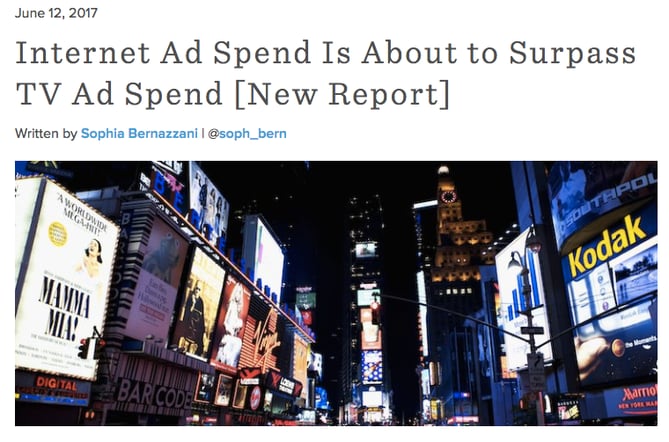
In a study of over 3.3 million paid link headlines, we found that headlines with this type of clarification -- [Interview], [Podcast], [Infographic], etc. -- performed 38% better than headlines without clarification . Again, it's all about setting clear expectations. Thanks to the brackets, these readers knew exactly what they were getting themselves into before they even clicked.
So if you remember nothing else from this blog post, let it be this: The most important rule of titles is to respect the reader experience. If you set high expectations in your title that you can't fulfill in the content, you'll lose readers' trust.
Accuracy encompasses more than just hyperbole, though. With the example working title above, you'd also want to confirm all of the examples are, indeed, B2B. Or even that they're all companies -- instead of, say, individual bloggers that target B2B audiences. See what I mean?
3) Make it sexy.
Just because you have to be accurate doesn't mean you can't find ways to make your title pop. There are a lot of ways to make a title sexier.
Of course, all of this hinges on understanding your core buyer persona. You need to find language that resonates with them, and know what they find valuable. (Haven't created or refined your buyer personas yet? Download this free template to create your own buyer personas for your business .)
Once you're armed with knowledge of your buyer persona's preferred style, try testing out some of these tips for making your headlines a little sexier:
- Have some fun with alliteration. The title and header in this blog post, for instance, play with alliteration: "Foolproof Formula." It's a device that makes something a little lovelier to read, and that can have a subtle but strong impact on your reader.
- Use strong language. Strong phrases (and, frankly, often negative ones) like "Things People Hate," or "Brilliant" pack quite a punch. However, these must be used in moderation. As one of my coworkers likes to say, "If everything is bold, nothing is bold."
- Make the value clear. As we mentioned above, presenting the format and/or contents to a reader helps make your content a little sexier. According to our research , templates tend to be particularly powerful for CTR: We found that adding "[Template]" to our titles got the most average views of all bracketed terms.
- Make it visual. Is there an opportunity to include visuals within your post? Make that clear in the title. Our research revealed that headlines featuring the word "photo(s)" performed 37% better than headlines without this word.
- Focus on the "whos," not the "whys". Want to intrigue your audience? Focus on the "who": Headlines including the word "who" generated a 22% higher CTR than headlines without it.
For example, let's say you're writing a post titled, "15 of Our Favorite Brands on Snapchat." How might we punch up our accurate-but-boring working title? Here are some options:
- 15 Brilliant Brands Who Are Killing It on Snapchat
- Snapchat Success: 15 Inspiring Brands Who Just Get It
- 15 Must-Follow Brands That Are Seeing Snapchat Success
4) Keep it short.
There is no one-size-fits-all answer to how long or short your title should be. It depends what your goals are, and where your headline will appear.
Do you want this post to rank really well in search? Focus on keeping the title under 70 characters so it doesn't get cut off in search engine results.
Are you trying to optimize your title for social sharing? According to our own analysis at HubSpot, headlines between 8–12 words in length got the most Twitter shares on average. As for Facebook, headlines with either 12 or 14 words received the most Likes.
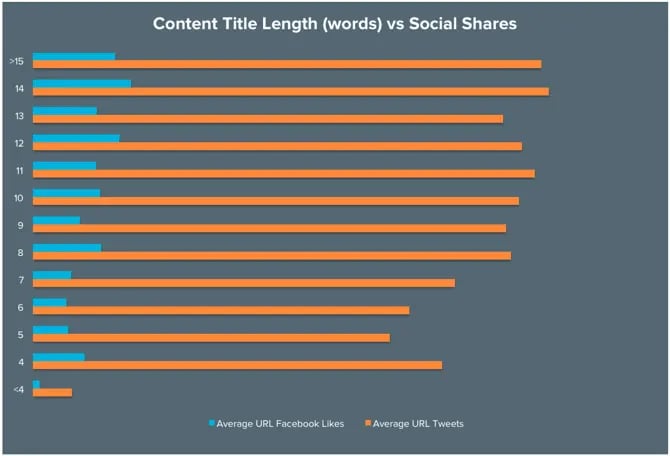
Additionally, headlines with eight words had a 21% higher clickthrough rate than the average title, according to the folks at Outbrain .
The lesson? It's always a good idea to run a few tests to see what works best for your particular audience.
Let's say I was writing this blog post: "Think Social Media Is Just for Kids? Here Are 10 Statistics Guaranteed to Prove You Wrong." To shorten it, I would simply try to rephrase it and cut out extraneous words. For instance, I might do something like this:
- Before: Think Social Media Is Just for Kids? Here Are 10 Statistics Guaranteed to Prove You Wrong
- After: 10 Stats That Prove Social Media Isn't Just for Kids
See? It's that easy. Try sounding out the title in your head to make sure it's easily digestible for your readers. The less of a mouthful you can make your titles, the better.
5) Try to optimize for search and social.
I say "try" because, sometimes, trying too hard to optimize for these things can make your title sound strange. Remember: You want to optimize your title for your audience above all else, but if you can optimize for both search and social, that's great.
The secret to thinking about all three at once? Focus on keywords that you know your audience is already searching for, then look into the search volume for those keywords.
Once you have a keyword in mind, you'll want to be sure to place it as closely as possible to the beginning of your headline to catch your reader's attention. (Again, you should keep your headline under 70 characters so it doesn't get cut off in search engine results.)
Another important consideration? Make sure your headlines are tweetable: "The 120-130-character range is the sweet spot for high clickthrough rate, according to an analysis of 200,000 tweets with links ," explains my colleague, Senior Marketing Manager Lindsay Kolowich . "This leaves enough space for people to include a short comment if they choose to manually retweet and cite you."
Here's an example: Let's say I'm writing a post titled, "X B2B Companies Using Facebook in Cool Ways." Looks like there's some wiggle room to optimize it without compromising clarity, right?
If the goal is to rank for the term, "Facebook Marketing," I'd recommend something like this:
"New to Facebook Marketing ? Here Are 10 B2B Companies Doing It Right"
This new title works for a few reasons:
- It's 56 characters long. This means that it's short enough to not be cut off in search engines and it's short enough to be retweeted.
- The keyword is in the beginning. By moving "Facebook Marketing" to the beginning of the title, we're ultimately increasing the odds that we'll grab our audience's attention.
- It's human. I wasn't kidding when I said you should focus on optimizing for your audience first. This title presents both a pain point and a solution all wrapped up in one.
( Download this ebook for more data-backed SEO strategies we recommend .)
6) Brainstorm with someone else.
Once you've refined your title using the tips above, it's time to come up for air and connect with another human. Title brainstorming is an essential part of the process.
Here at HubSpot, we spend a decent amount of time and brainpower coming up with our titles. The final step before scheduling a blog post is pulling another member of our team into a back-and-forth title brainstorm in a chat room. One member of the duo will post the title they recommend into the chat pane window. The other person will then refine that title even further, or suggest other angles. After several back-and-forths, the duo will agree on the title that's accurate, sexy, concise, and SEO-friendly.
Only when both parties agree on a title do we schedule our post for publishing -- which can take as little as five seconds and as long as ten or so minutes. While that seems like a long time, it's essential to put our best feet forward with each post we publish.
What's your process for crafting titles? Let us know in the comments.
Editor's Note: This post was originally published in October 2013 and has been updated and for freshness, accuracy, and comprehensiveness.
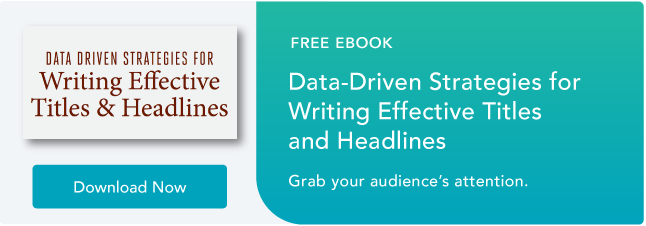
Don't forget to share this post!
Related articles.

Made You Look! How to Make Headline Grabbers Work for You
![how to write a catchy presentation title 13 Types of Blog Headlines That'll Get You More Traffic [+ Examples]](https://blog.hubspot.com/hubfs/Headline-Examples.jpg)
13 Types of Blog Headlines That'll Get You More Traffic [+ Examples]

Subheadings: What They Are & How to Craft Great Ones

How to Master the Art of Exceptional Blog Titles
![how to write a catchy presentation title How to Write Better Headlines [Infographic]](https://blog.hubspot.com/hubfs/write-catchy-headlines.jpeg)
How to Write Better Headlines [Infographic]
![how to write a catchy presentation title A Data-Backed Approach to Writing Great Headlines [Infographic]](https://blog.hubspot.com/hubfs/write-effective-headlines.jpeg)
A Data-Backed Approach to Writing Great Headlines [Infographic]
![how to write a catchy presentation title A Data-Driven Guide to Writing Better Headlines [Free Ebook]](https://blog.hubspot.com/hs-fs/hub/53/file-2519720445-png/Outbrain_Blog_Image.png)
A Data-Driven Guide to Writing Better Headlines [Free Ebook]
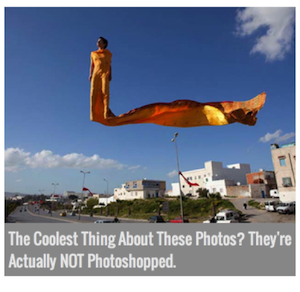
Common Headline Writing Myths We Should All Stop Believing
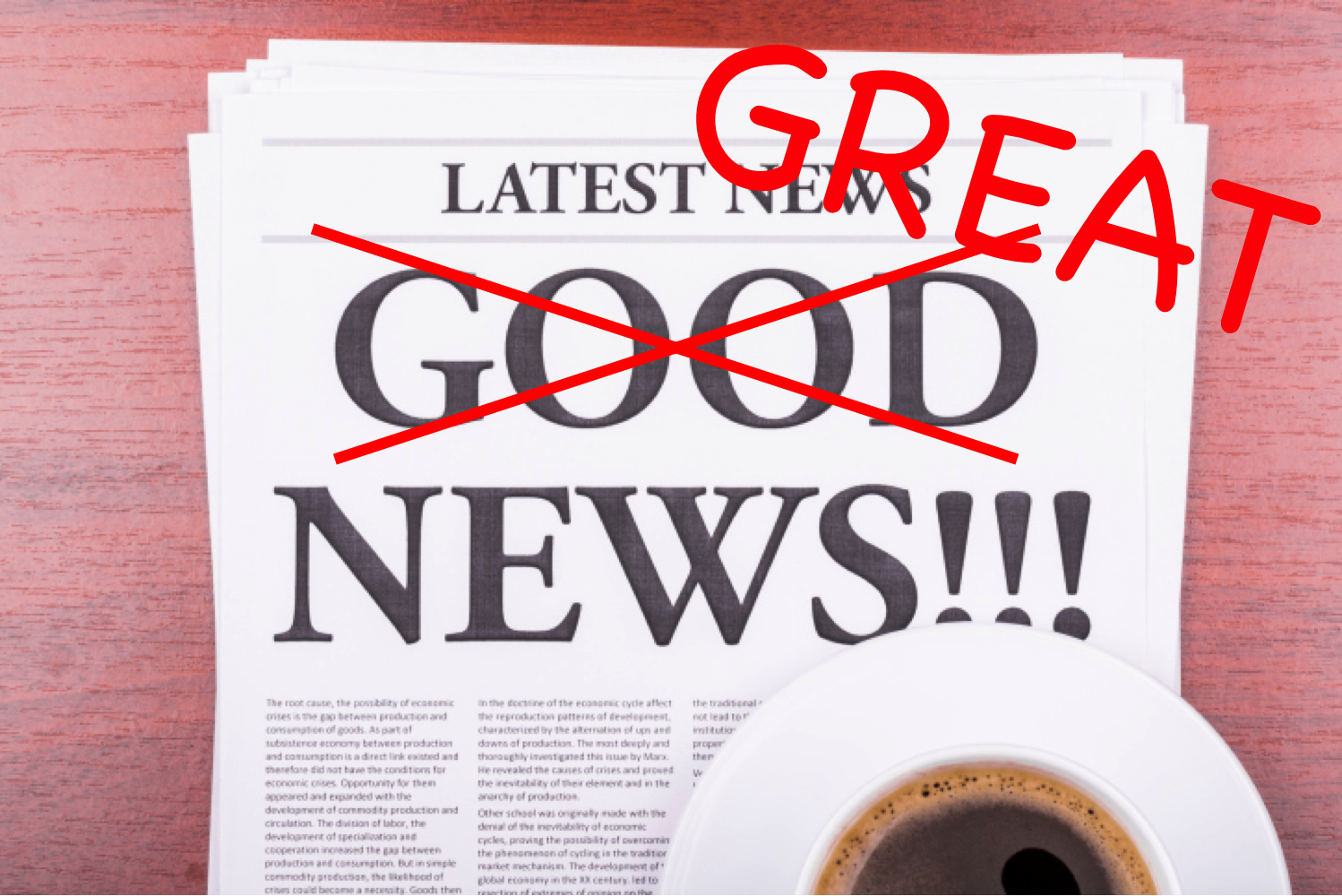
Before & After: How to Fix These 7 Horrible Headlines
13 Awesome Headlines for Business Blogging Success
Save time creating blog posts with these free templates.
Marketing software that helps you drive revenue, save time and resources, and measure and optimize your investments — all on one easy-to-use platform
Title Generator
Free AI Title Generator
Generate a list of catchy titles and headlines with our AI-powered title maker. Increase your reach with blog posts, email campaigns, social media and more.

Top Skincare Products for Any Budget

By using AI title generator, you agree to Open AI’s terms and conditions . Wix assumes no responsibility for results, verify you have the right to use the generated results before publishing.
How to use our free headline generator in 6 steps
Great headlines are an essential tool for engaging your audience. They improve click-through rate, broaden your audience and increase your potential to monetize your content. Try our free online title maker for access to original headlines that are proven to drive clicks.
Enter your keywords
Type your topic or a couple of keywords into the Title Generator search bar.
Click ‘Get Your Title’
Select the orange button to the right of the input field to populate your initial list of titles.
Refine your results
Zero in on your target by choosing a “subject” from the drop-down menu.
Expand your options
Click “Load More” to see additional custom titles and headers generated just for you.
Copy your selections
Copy your favorite titles and apply them immediately or stockpile them for later.
Watch them work
Enjoy the results as you see increased views and engagement with your content.
More creative title generators from Wix

Blog Title Generator
Hook your audience with engaging titles generated by our free AI blog title generator.

YouTube Title Generator
Go viral with irresistible headlines created by our free AI YouTube title generator.
What makes a good title?
Good news. Your days of agonizing over how to write a headline that converts are over. Check out our guide for choosing the best titles from our AI title generator.
Optimize the length
50-70 characters is usually the sweet spot for a catchy title. It offers enough information to hook the reader without overwhelming them or getting cut off.
Add numbers & dates
Titles with numbers in them have a higher click-through rate. Include the year to show your content is current or the number of tips you’re sharing.
Test your title
Use the acronym SHINE (Specificity, Helpfulness, Immediacy, Newsworthiness, Entertainment value) to test the strength of your headlines.
Elevate your words
Use ‘power words’ that trigger an emotional response from the reader so they want to dive in. For example, words like ‘best’ and ‘sizzling’ are great options.
Title ideas for your content creation
Our title generator will help you get ideas and create catchy titles for your "how to" articles and guides, presentations, website, product descriptions and more.
We’ve put together a list of some of the best title examples from our AI heading generator to get you started. Try it out for yourself and ensure every piece of content you create has a title that draws attention and drives engagement. With the right title, you’ll hook audiences to keep reading, watching or listening right from the start.
10 Things I Wish I Knew Before Having Kids
5 Y2K Fashion Trends We’re Obsessed With in 2024
What’s Potato Milk and Why’s Everyone Talking About It?
Get a 6-Pack by Spring With These 7 Exercises
20 Thrifting Hacks That Will Change Your Life
The People Closest to Madonna Share Big Secrets
What the 1% Doesn’t Want You To Know
Why Mozart Is Still Relevant in 2024
15 Startling Facts About America
The Myths and Facts Behind the Royal Family
How to Know if You're Ready To Run a 5k
My Unlikely Soccer Success Story
Top 10 Easy Recipes of 2024
5 Best Gardening Apps in 2024
Why You Need To Buy This Goat Milk Soap
Are these All-Inclusive Resorts Worth the Price?
20 Birthday Party Ideas for Kids
A Complete Guide to the Stock Market in 2024
Say "Yes" to These 5 Wedding Budgeting Tips
Why Carbs Are Here To Stay
More Wix tools
Don’t stop at the headline generator. Try out our other free business tools to boost your brand.
.jpg)
Video Maker
Create stunning videos in minutes to engage your audience and showcase your work.

Image Resizer
Optimize your photos for anything. Adjust image size, file size, file format, crop and more.

Showcase your new business name with a custom logo that reflects the essence of your brand
Title Generator FAQ
What is title generator.
Title Generator is a free Wix Tool that helps you increase engagement with your content by generating catchy titles, headlines, subject lines and more.
How does our title creator work?
Our title name generator uses AI technology that transforms the words you input into a list of creative, catchy and effective headlines for you to use however you’d like.
How do you create a unique title?
Finding a unique title can be hard. That’s where our free headline creator can help. Just input your topic or some keywords into the Title Generator and you’ll instantly get a list of catchy titles.
How do you choose a good title?
When creating a title, there are a few things you should consider. First, you’ll want to make sure you are earning your audience’s trust. Confirm that your title accurately reflects your content and consider adding the year to inform scrollers that your information is current. Next, check that your title is within the character limit for whatever search engines people might be using. Around 60 characters is usually a good sweet spot. Lastly, you’ll want to make sure your title is attention-grabbing. People are exposed to a lot of content daily, so you have to work to get them to click.
Bring your titles to life on a professional website
- Announcements
- In the News
- Publications & Blogs
- Rankings & Awards
- Events & Spaces
- Adjunct Faculty Member to Perform at Midsommarfest Street Festival
Campus Communications Staff / Jun 07, 2024

Chicago’s popular summer festival scene provides performance opportunities for faculty, students, and alums.
This weekend Audio Adjunct Faculty Member Ryan Black, aka Blizz, will be performing with NÆ at Midsommarfest in Chicago’s Andersonville neighborhood on Sunday, June 8 on the Summerdale Stage located at 5350 N. Clark St.
“This will be a high-energy, eclectic cosmic-themed pop show with a theatrical narrative, inflatable props, and empowering message of inclusivity and self-expression,” Black says. “NÆ and Blizz will perform catchy, all-original songs that speak to consumer culture, conspicuous consumption, and aspirational lifestyle culture.”
Black participated in and collaborated on the show’s writing, composing, choreography, audio production, sound effects/ sound design, directing, and presentation.
Learn more about NÆ and her co-pilot Blizz.
- Announcement
- Audio and Music
- Audio Arts and Acoustics
- Faculty Spotlight
Recent News
- Upcoming Events at Columbia College Chicago
- Film Festival Selects Animated Student Short for Screening
- Spring Semester In Review At Columbia
- New Exhibition, Captured Earth, Opens May 24 at MoCP

IMAGES
VIDEO
COMMENTS
Tips for Creating Catchy Presentation Title. 1. Keep It Short. A strong presentation title conveys the main topic using a few words. Short statements are more likely to impact the audience immediately, and their brevity makes them easily understood and remembered, leaving a lasting impression.
So, if you want your presentation title to stand out, here are some tips on how to write a catchy presentation title. Table of Contents. 9 Tips for Writing a Catchy Presentation Title. 1. Provide Relevant Information. 2. Tell a Story. 3. Make Use of Numbers.
Promise benefits. Dale Carnegie's famous book "How to Win Friends and Influence People" is still one of the best-selling communications books on Amazon. The title of the book is a big part of it's success. That title works because it promises benefits. It's not enough to say: How to teach bioethics.
Write that voice-over down as the action title. Refine the title. Now refine the title you just wrote. Make sure it is understandable as a stand-alone sentence, and that the words you use are active and convey an insight. See the end of this article for examples and best practices on action titles. Trim the content.
Create a title that zeroes in on your "idea worth spreading.". While it's okay to have some pizzazz in your presentation title, you still want it to accurately reflect the key idea you want your audience to take action on and not be too open for interpretation. Let your title communicate your point of view on your topic.
Step number one is to turn your idea into a complete sentence. Your first iteration of a title should have a subject, a verb, adjectives, and adverbs. When most presenters start creating their presentations, they often use sentence fragments as a way to remember what they want to cover. These are presenter cheat-notes.
Crafting a catchy presentation title does not have to be complicated. Start by writing down the main idea, benefit, or problem that you want to address. To make your title stand out, consider ...
For example, Order & Chaos, Good & Evil and Curious Tales. Another great Storyteller Tactic to use when searching for the perfect title is That's Funny. It has you pick out something about your presentation/story that is a bit odd and makes you go " Hmm, that's funny… ", or perhaps a person that is acting unusually.
Another way is to use contrasting colors for the title, making it pop. A simple act of making this visual shift will have a major impact on how people perceive your slide titles. 3. Make it Succinct and Simple to Understand. A slide title, like a title for an article or blog, needs to be simple, clear, concise, and easy to understand.
What is more, when you use these titles, you should always add some adjectives to A and B to add even more emotion to your eye-catching title. 3. Make your audience curious. When you are invited to make a speech, this means that you have something important to say. This is why you should make the most out of it.
1 Use the 4 Cs formula. One way to craft a catchy title is to use the 4 Cs formula: clear, concise, catchy, and coherent. A clear title tells your audience what your presentation or poster is ...
Examples of action titles. Now you know how to write good action titles, let's take a look at some examples from real consulting firms, such as McKinsey, BCG and Bain. These action titles come from our Slide Library. The slide library contains over 100 strategy consulting slides from real consulting firms. You can browse and filter to learn ...
7. An interesting fact. Catch the audience's attention by putting an interesting fact concerning the topic on one of your slides - ideally at the beginning, but maybe also in the end (to keep up the audience's interest even after the presentation is done). 8. The title, but with a twist.
Writing a great title can be hard. Whether you want people to book you as a speaker, or you just want people to show up to your meeting. You need to have a g...
To write a catchy title, start by understanding your audience and what they find interesting or valuable. Use powerful and descriptive words that convey the benefits of reading your content. Incorporate numbers, questions, or unexpected statements to create intrigue and curiosity.
Method 1: Choosing A Template From The PowerPoint Library For Creating A Title Slide. Step 1: To create a title slide, open the PowerPoint presentation application and click on 'New.'. Step 2: You will find many PowerPoint templates; double-click on the template you like and click on 'Create.'. Step 3: The template you chose will appear.
For social media, play around with fun, emotional, and engaging titles. CoSchedule recommends the following title character counts for popular platforms. Image source. 3. A challenge, problem, or goal. Research shows the most engaging webinar format is a presentation that teaches people how to do something specific. The key: specificity.
Creating catchy titles can take some research and practice to master. When practicing writing a catchy title, remember these steps: 1. Research your keywords. Every piece of content has a subject and a purpose, which can help you find the keywords of your content. These keywords are how search engines find and map your content to help search ...
Of course, eye-catching visuals are important for drawing attention. Though naturally, your eyes are also going to be drawn to the titles of each poster. You see the typical "Investigation of X" and the classic "Characterisation of Y". It's kind of what you expected. But you're the lookout for the unexpected. Instead, you might be ...
5) Try to optimize for search and social. I say "try" because, sometimes, trying too hard to optimize for these things can make your title sound strange. Remember: You want to optimize your title for your audience above all else, but if you can optimize for both search and social, that's great.
Generate a list of catchy titles and headlines with our AI-powered title maker. Increase your reach with blog posts, email campaigns, social media and more. By using AI title generator, you agree to Open AI's terms and conditions. Wix assumes no responsibility for results, verify you have the right to use the generated results before publishing.
1. Use keywords and phrases. 2. Be creative and catchy. 3. Use formatting and fonts. 4. Test and refine your title. Be the first to add your personal experience.
3. Title and Abstract. Today we are not sitting in libraries but are using the Internet: Google, the Web of science, and so on. This makes the title, the abstract, and the cover art of special importance because they are passing through the first sifting grid, especially the title.
"NÆ and Blizz will perform catchy, all-original songs that speak to consumer culture, conspicuous consumption, and aspirational lifestyle culture." Black participated in and collaborated on the show's writing, composing, choreography, audio production, sound effects/ sound design, directing, and presentation.